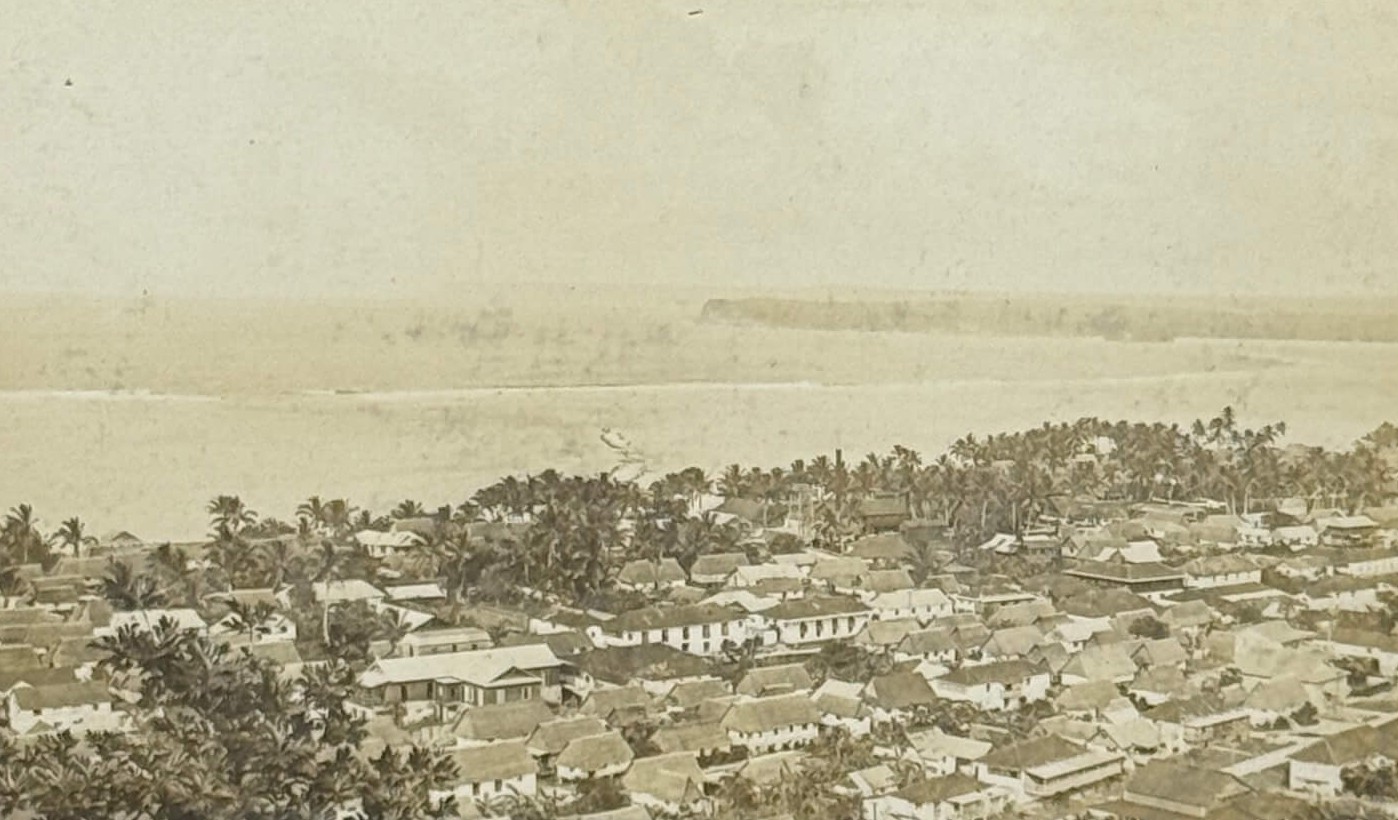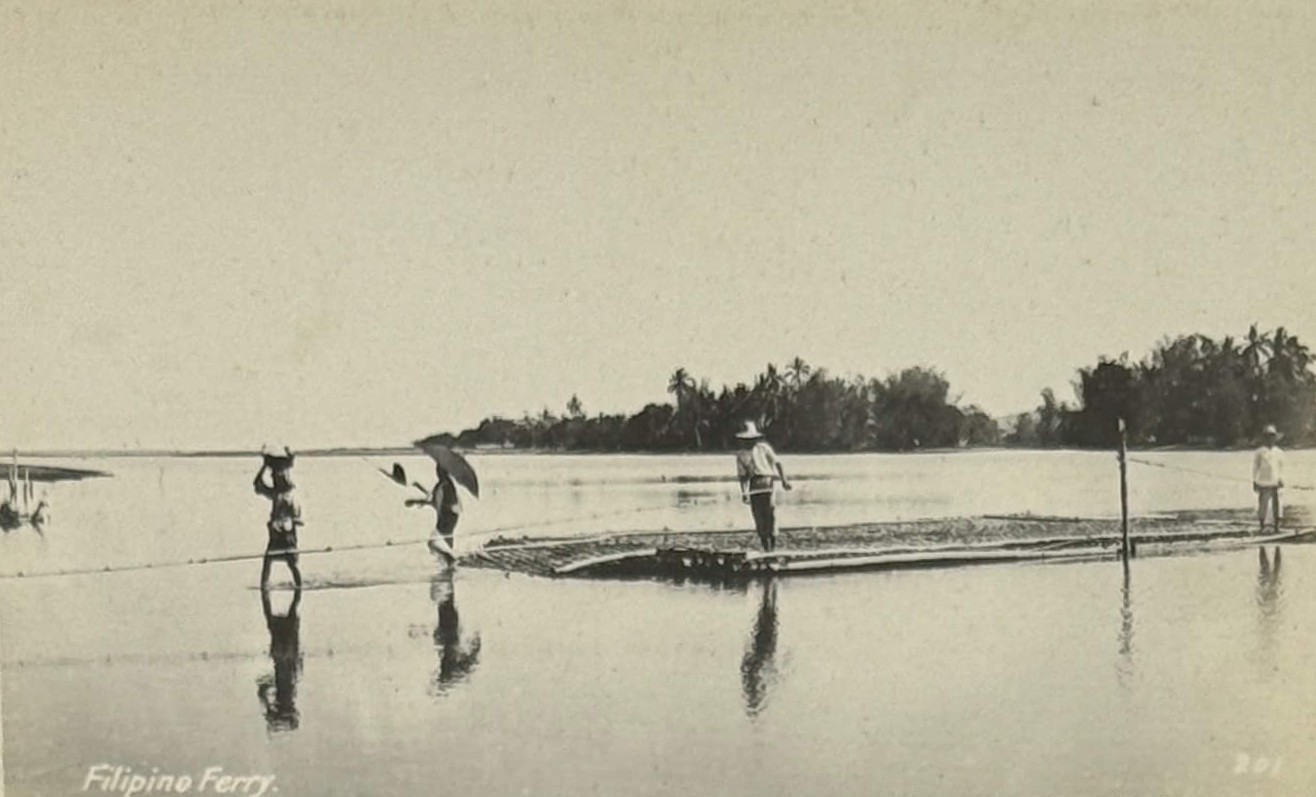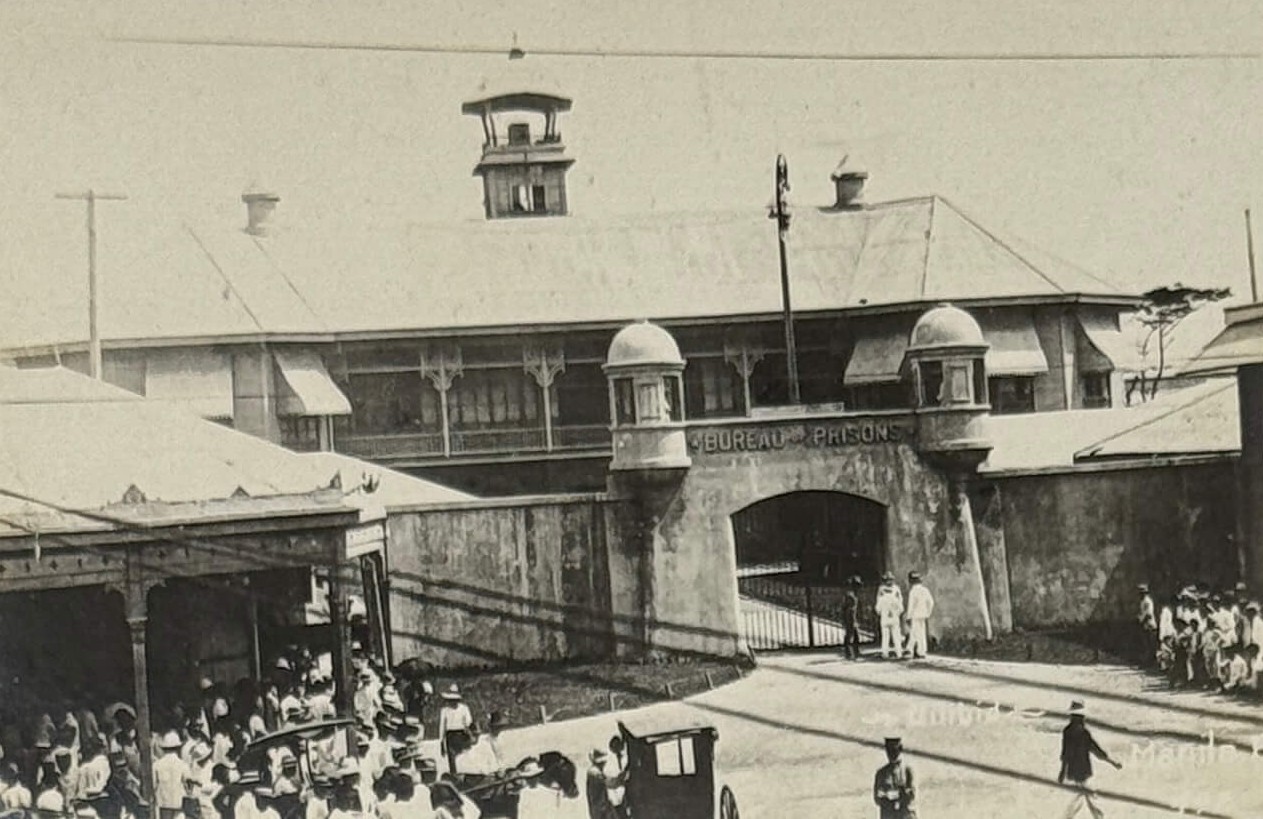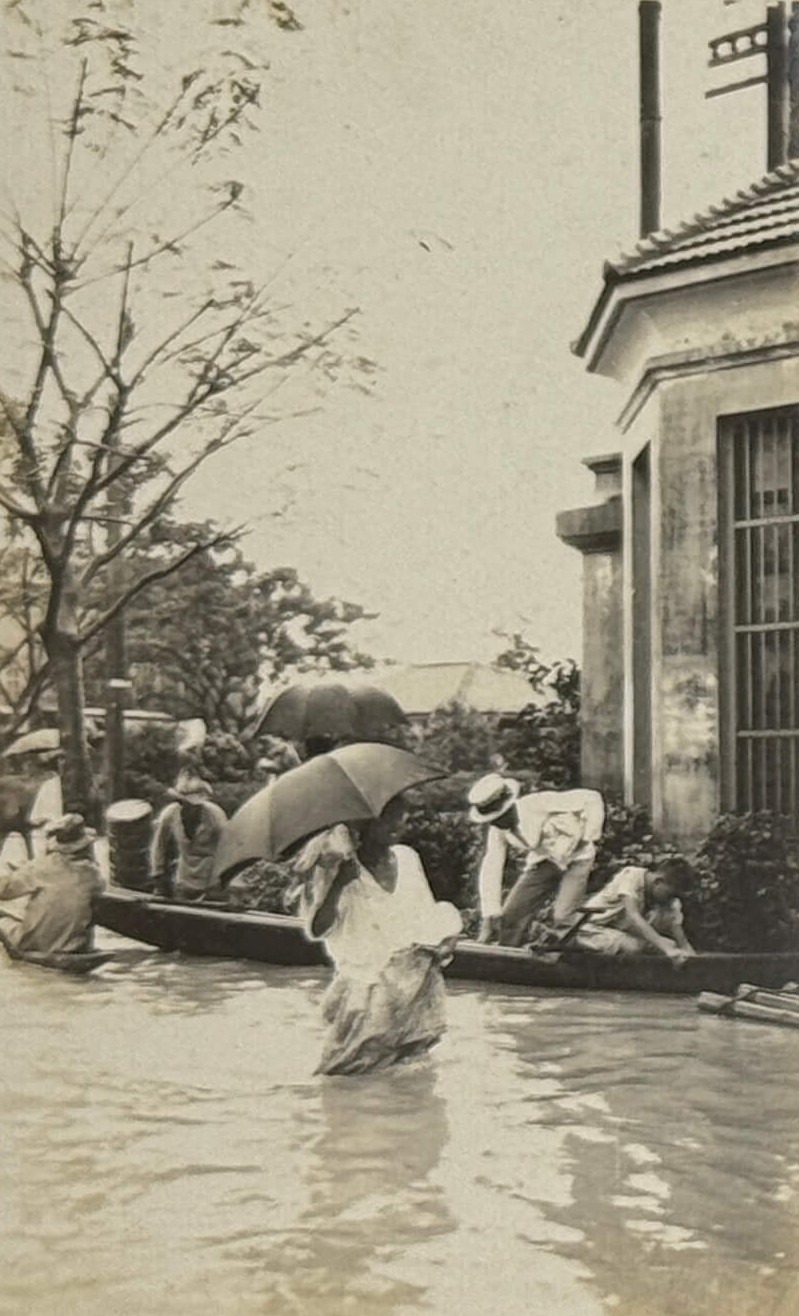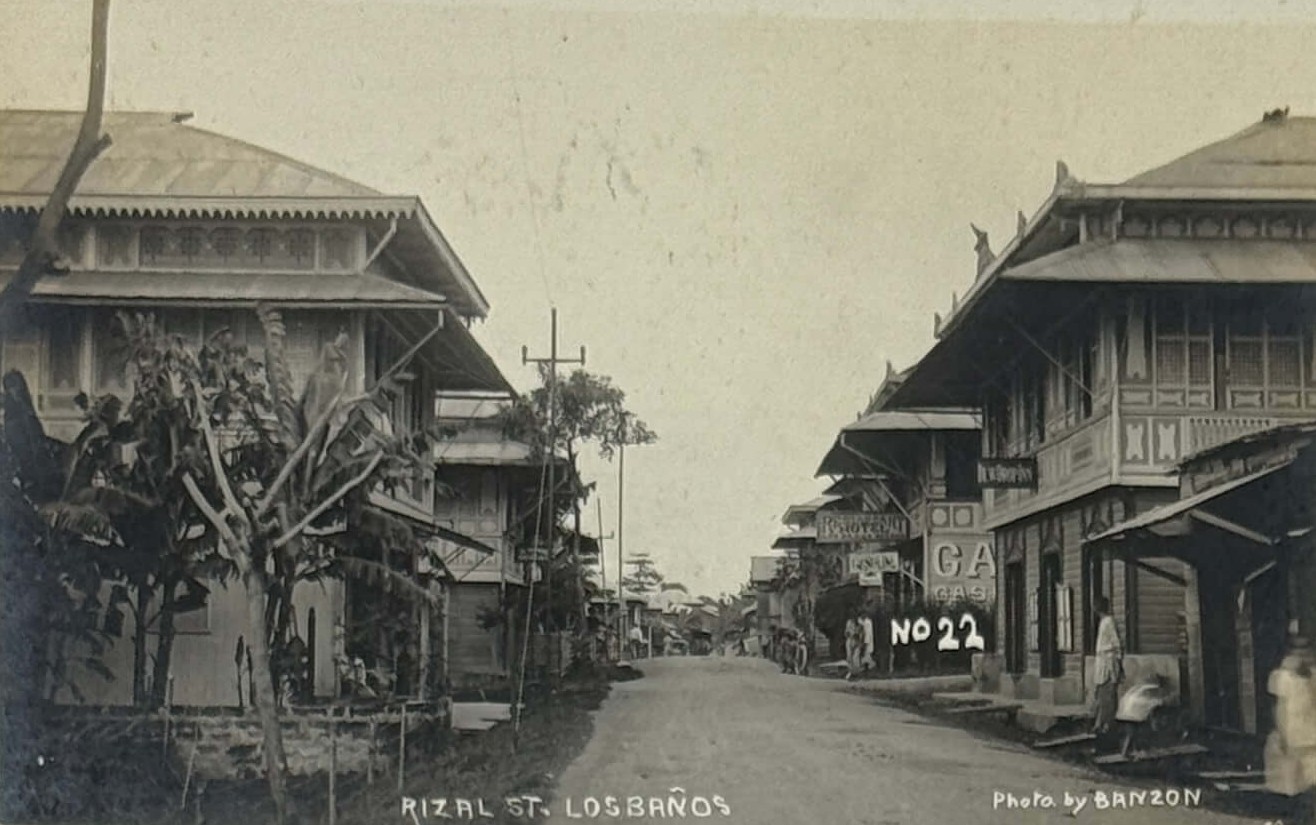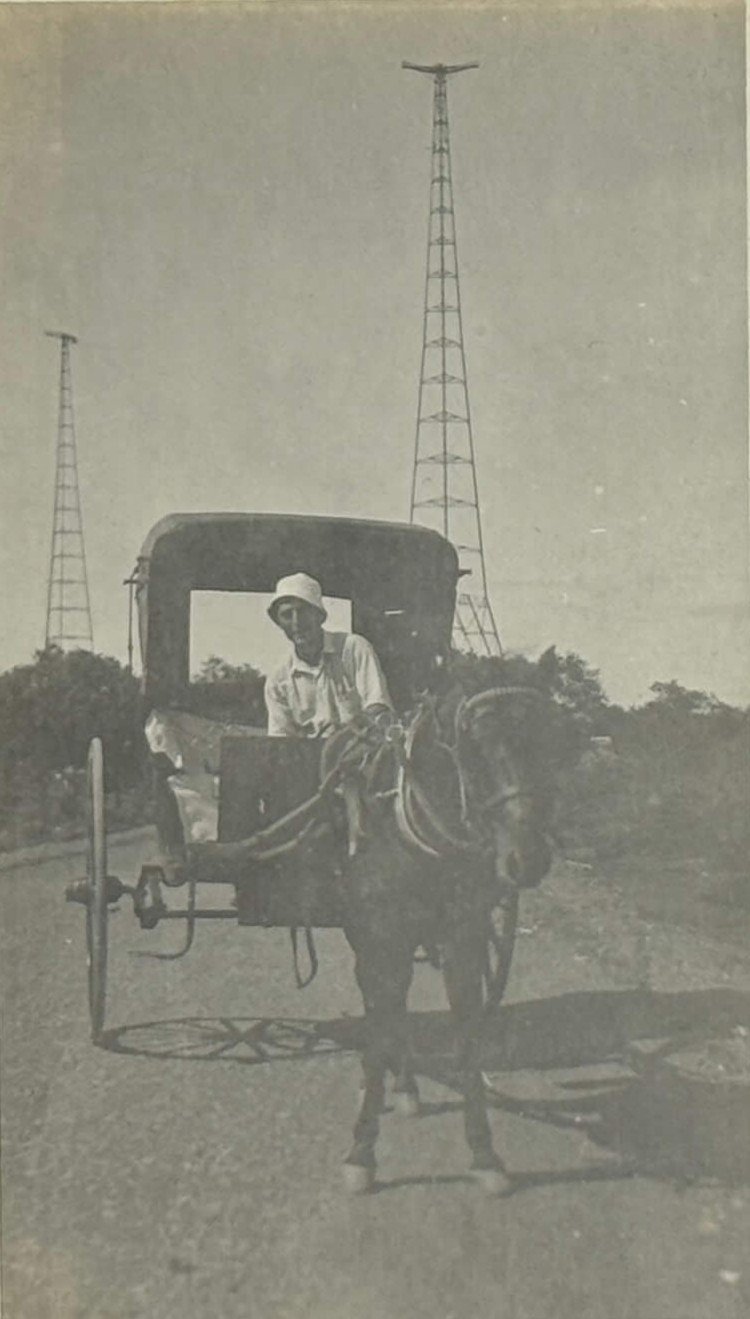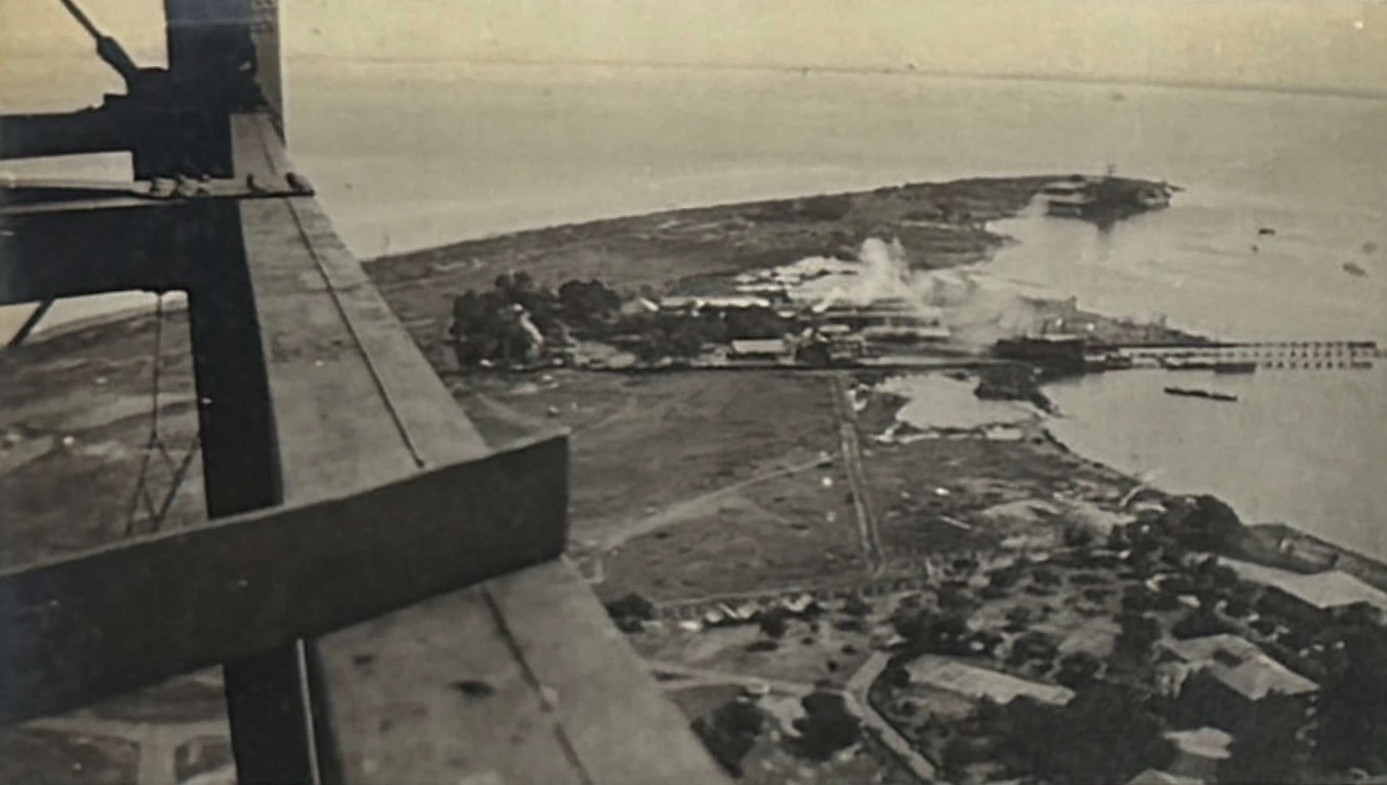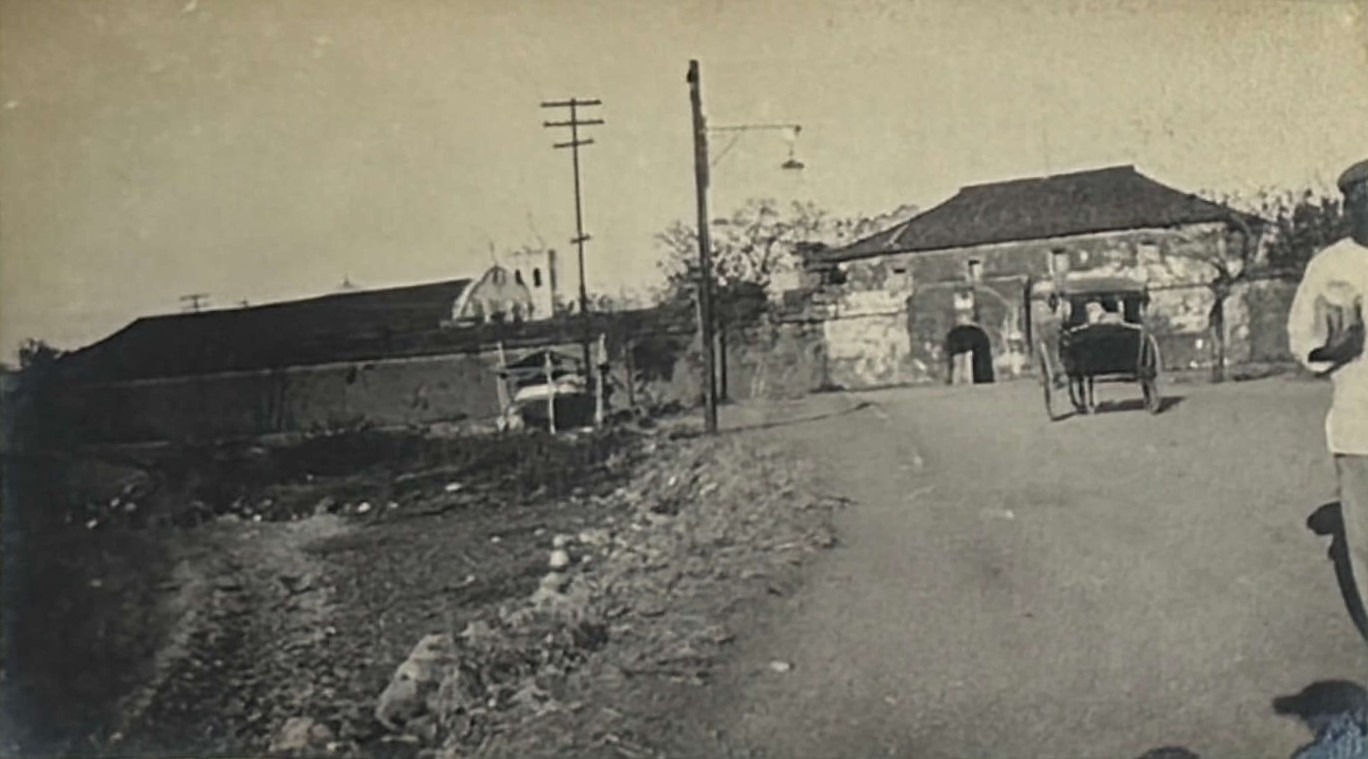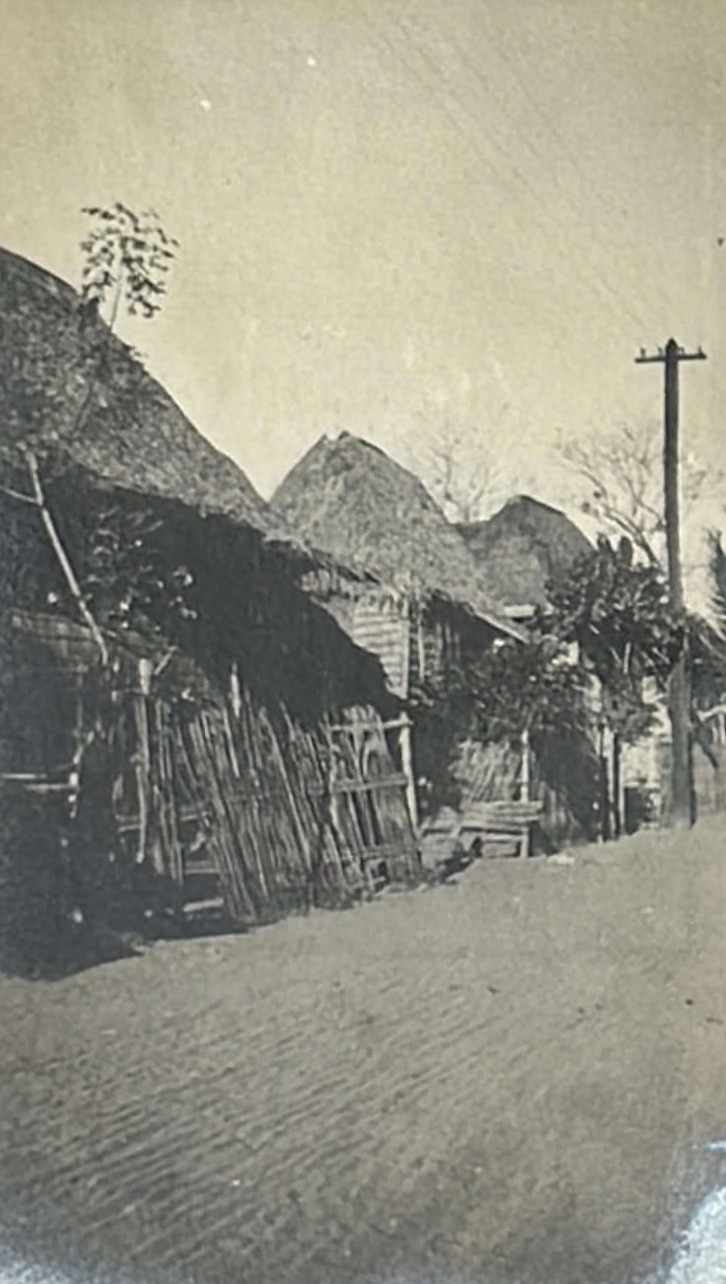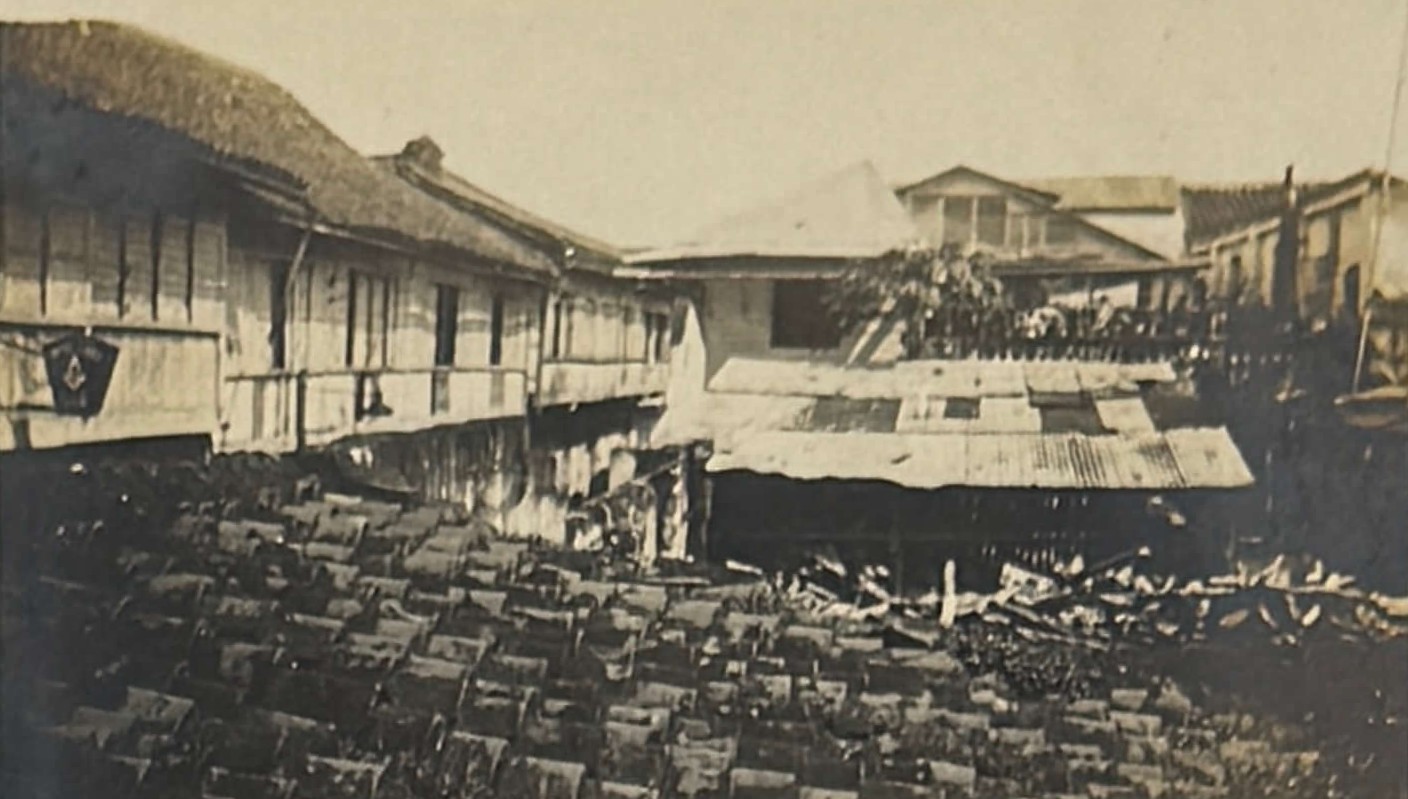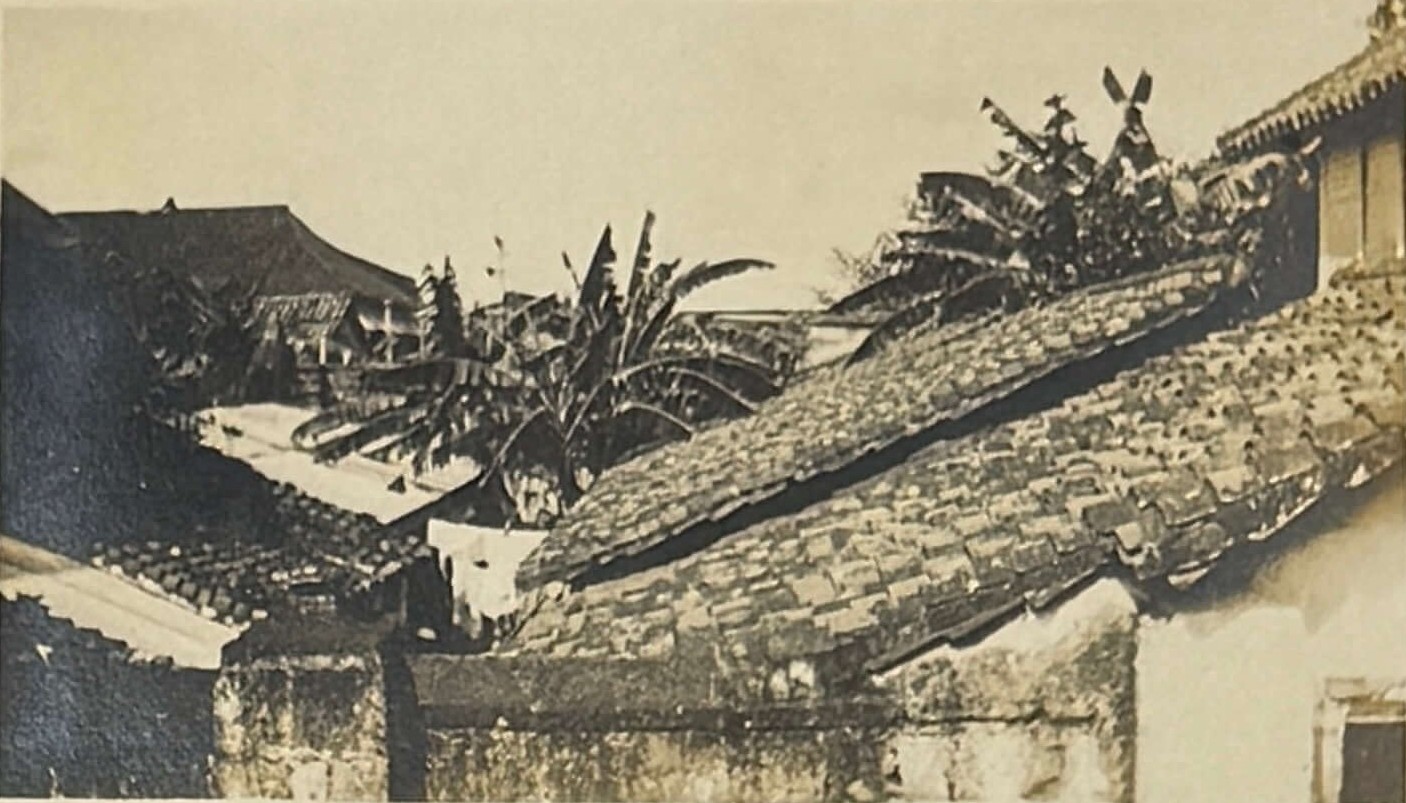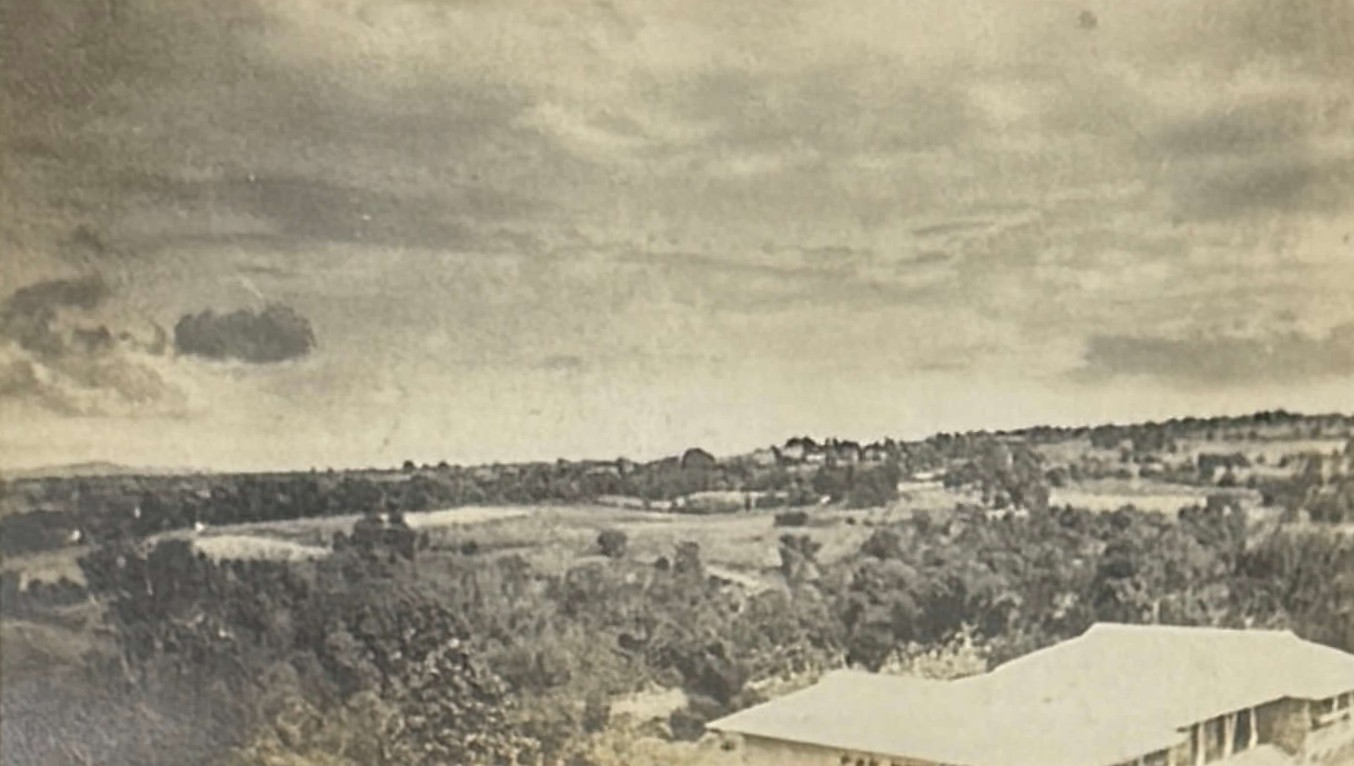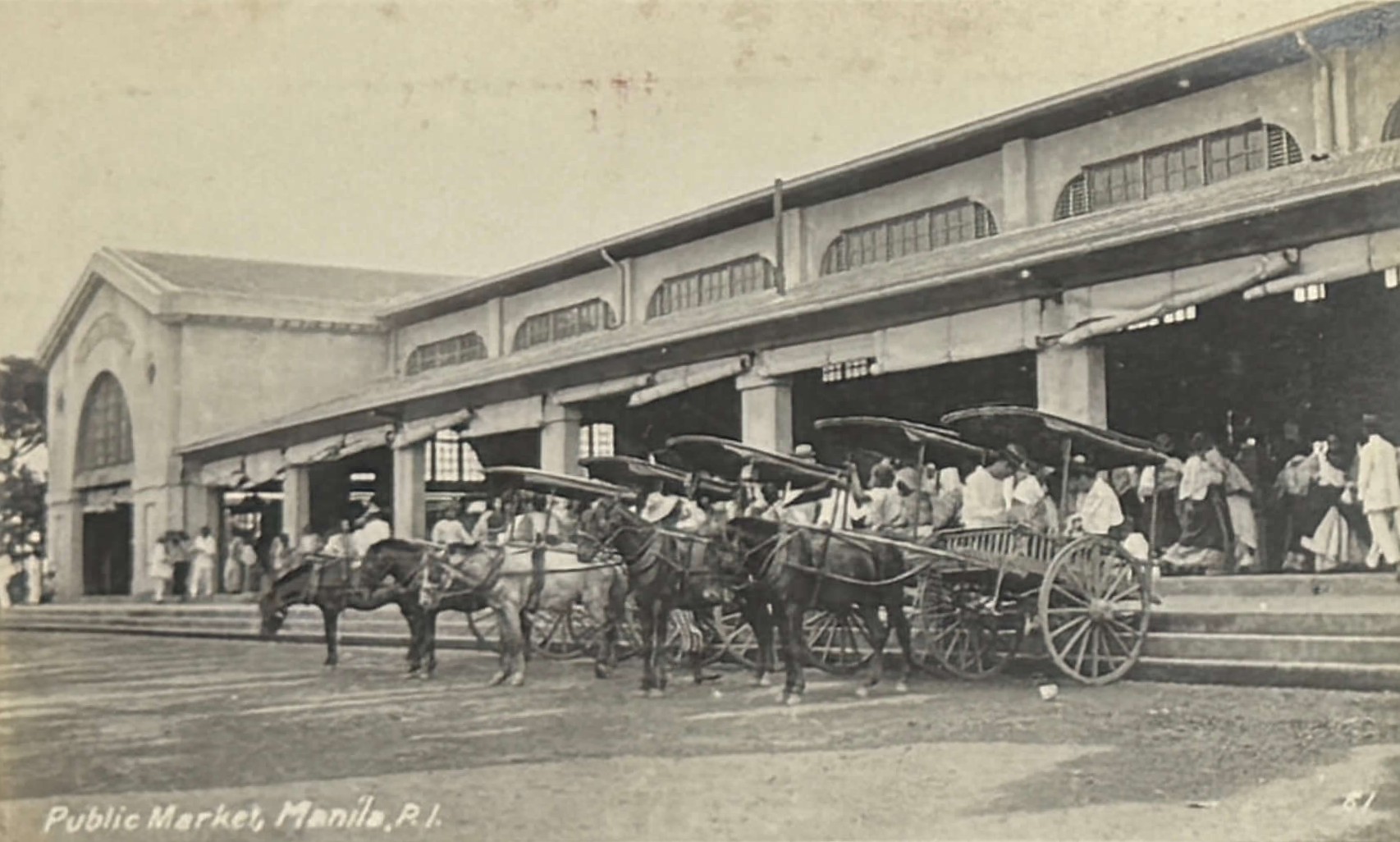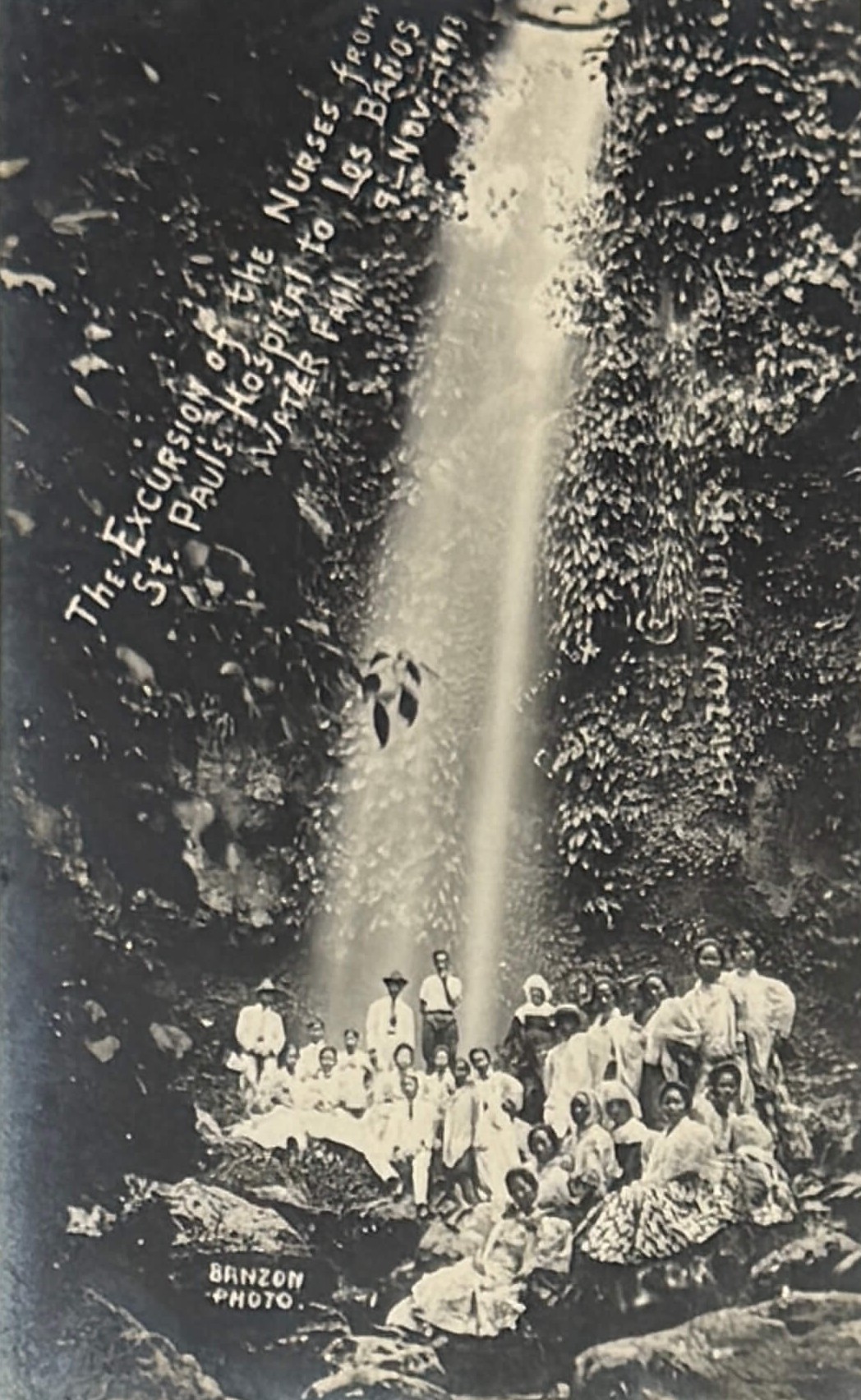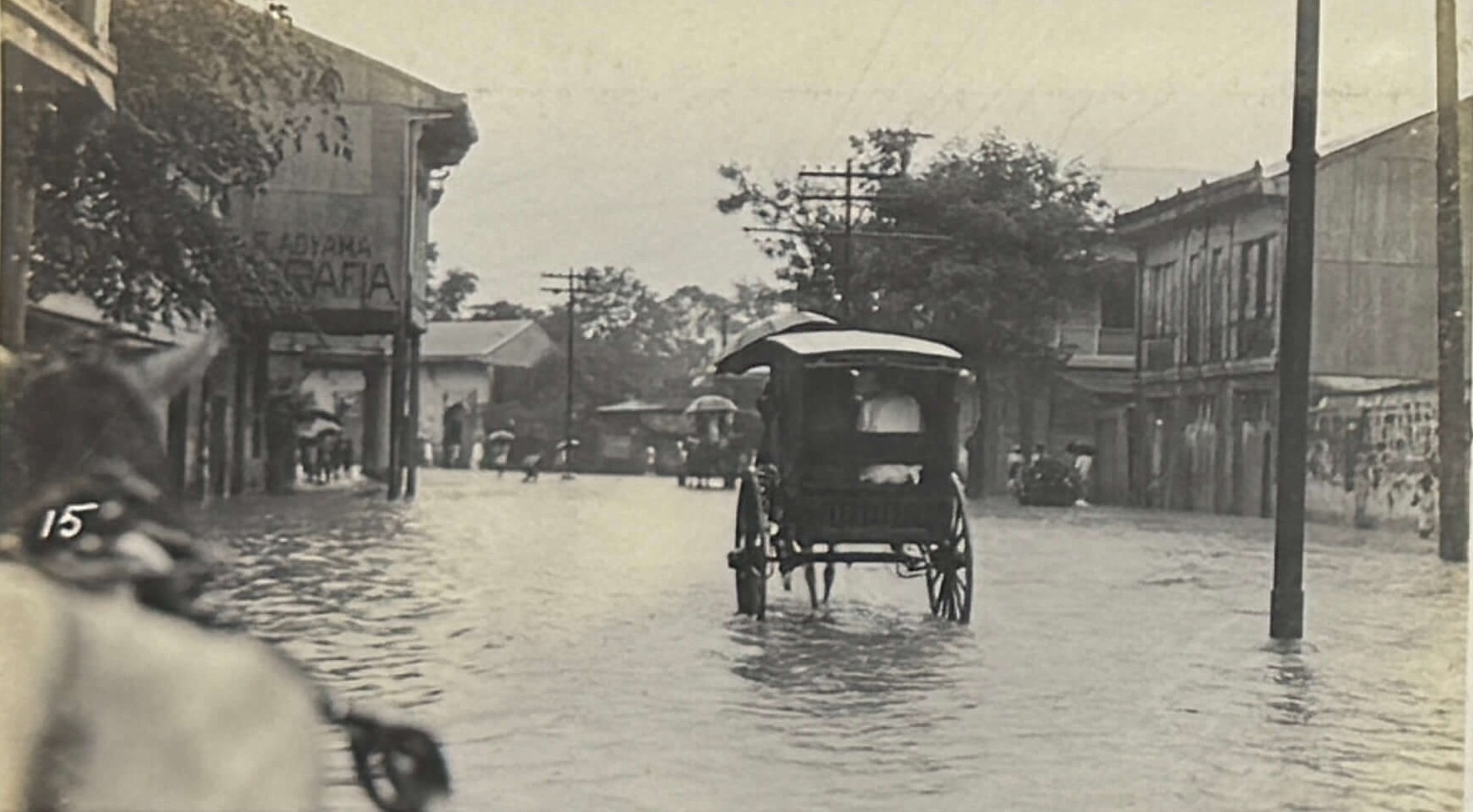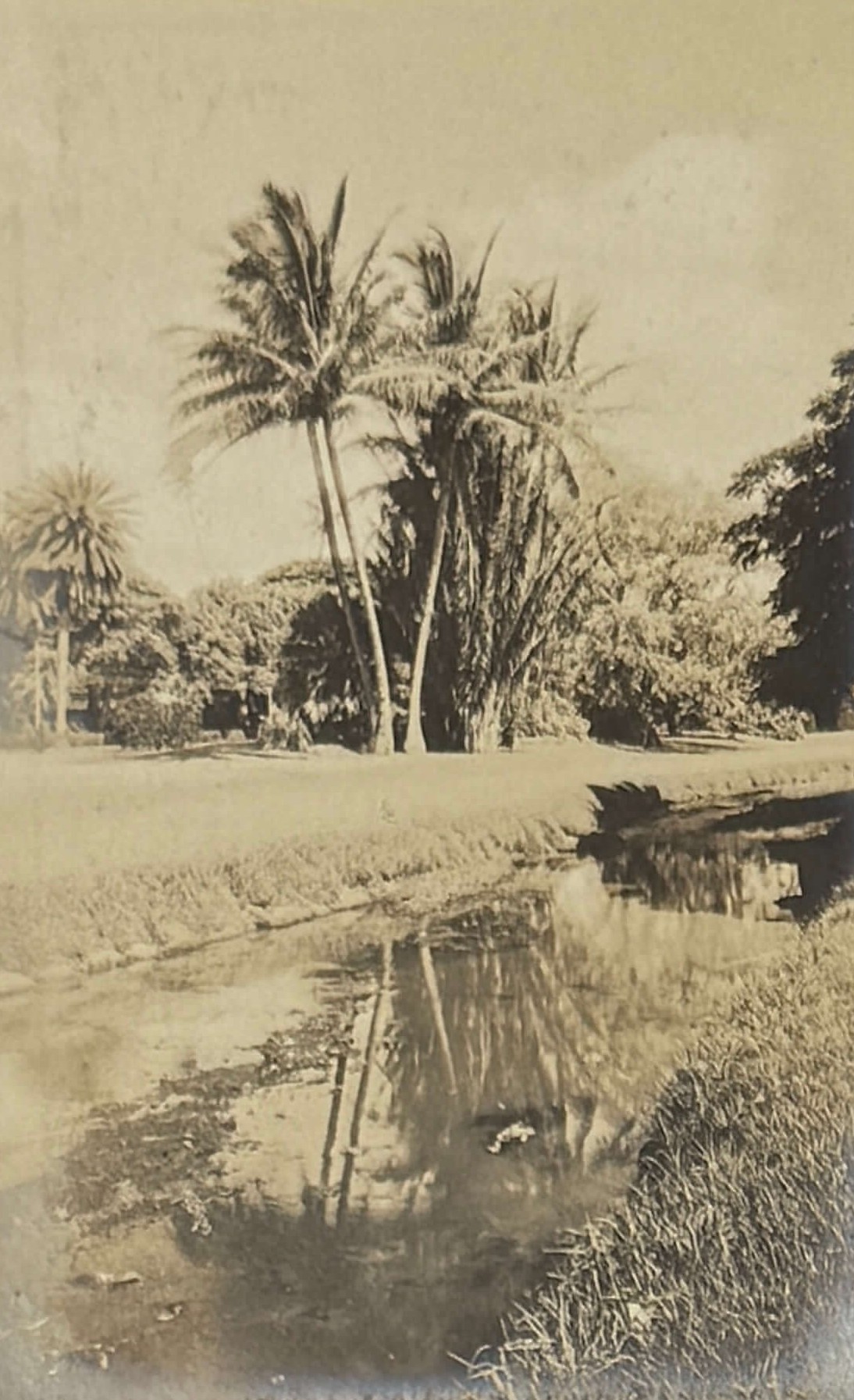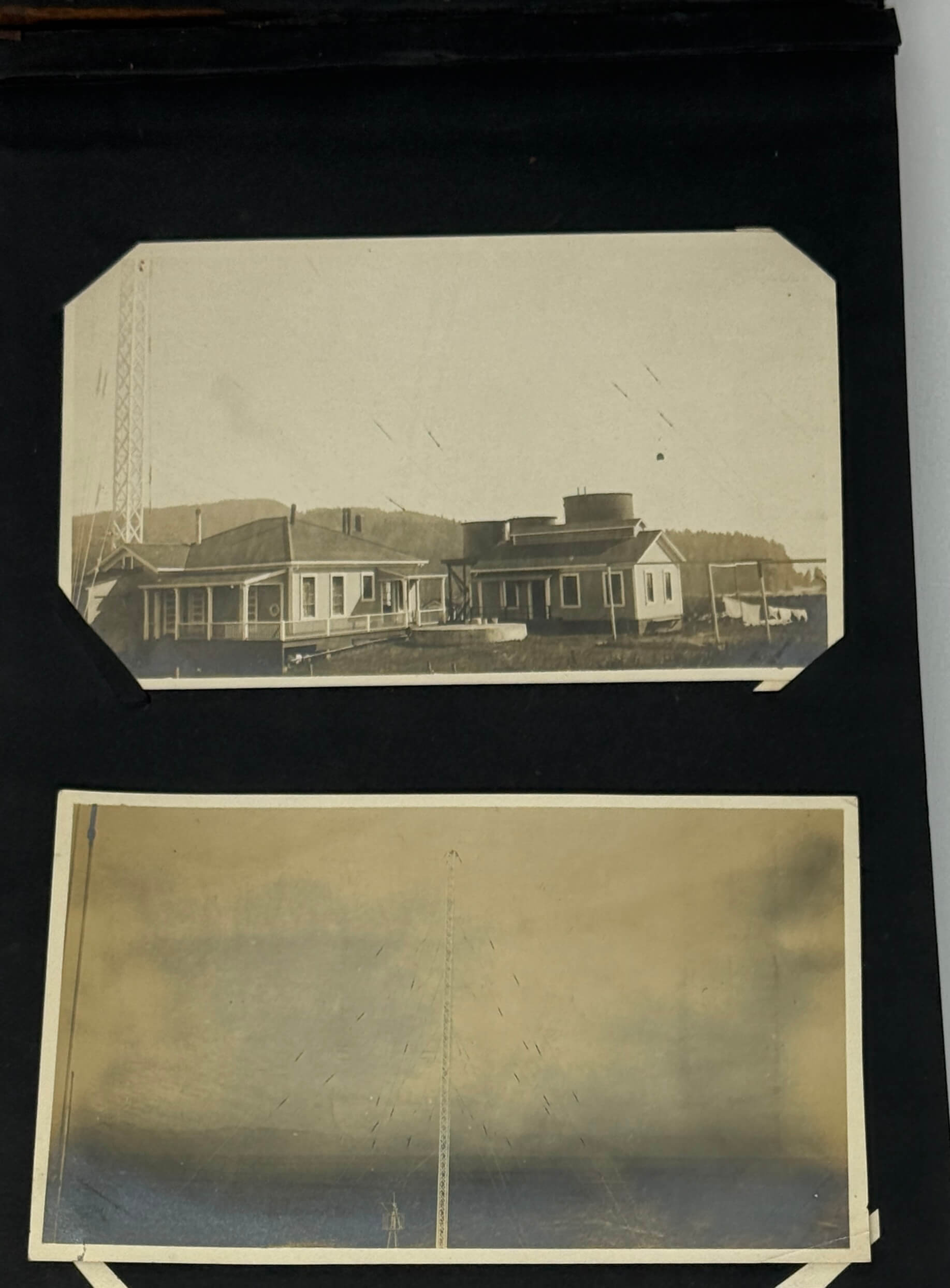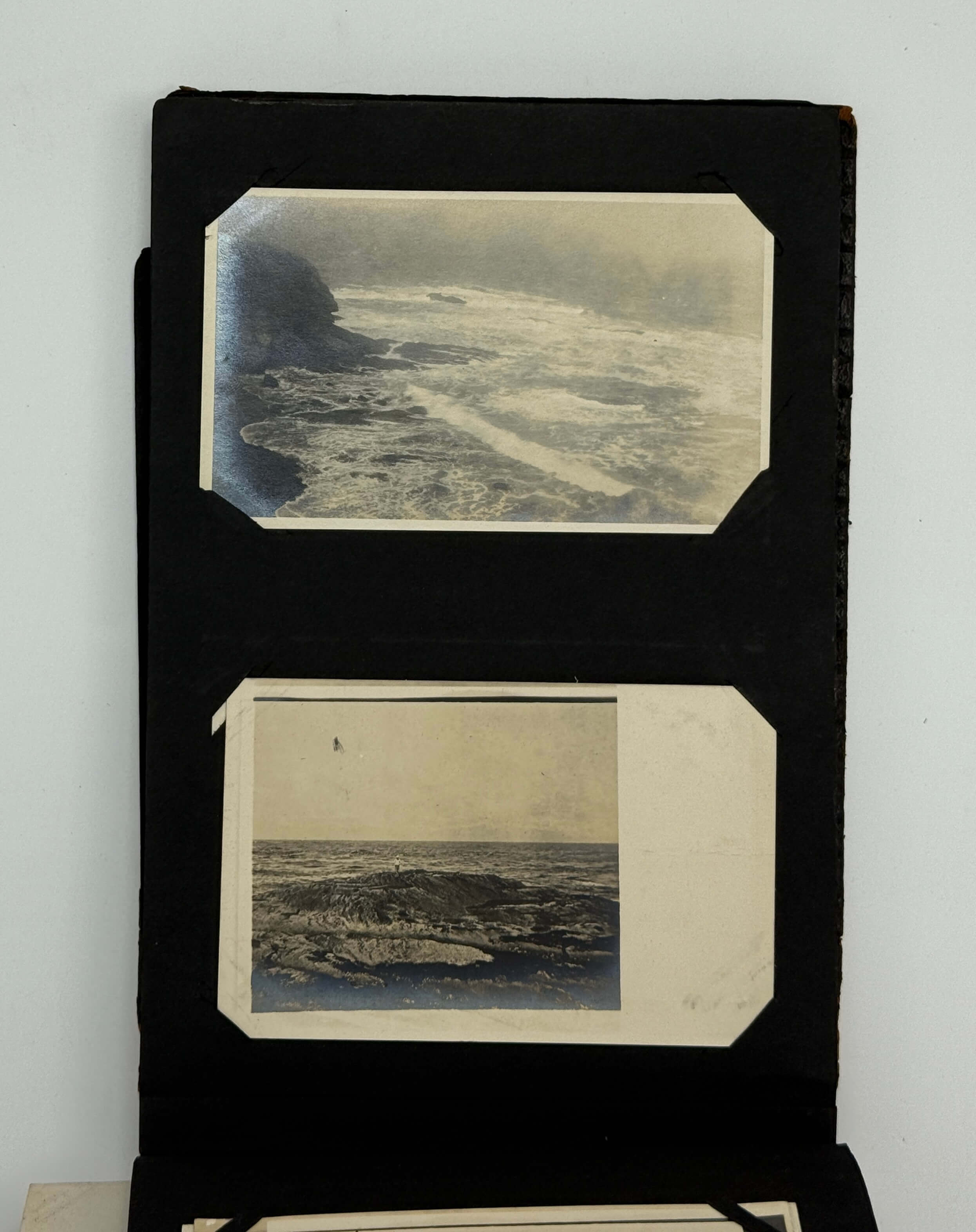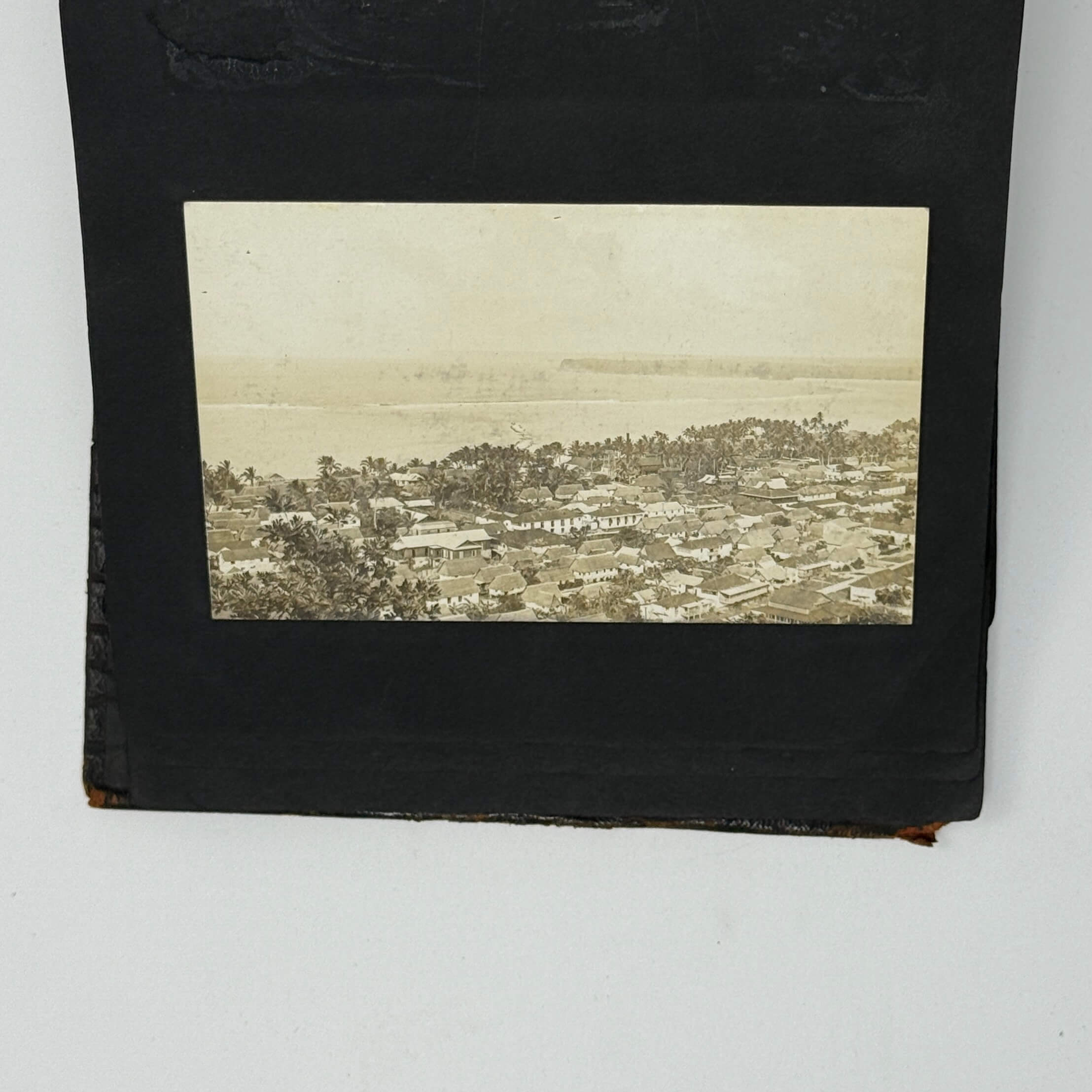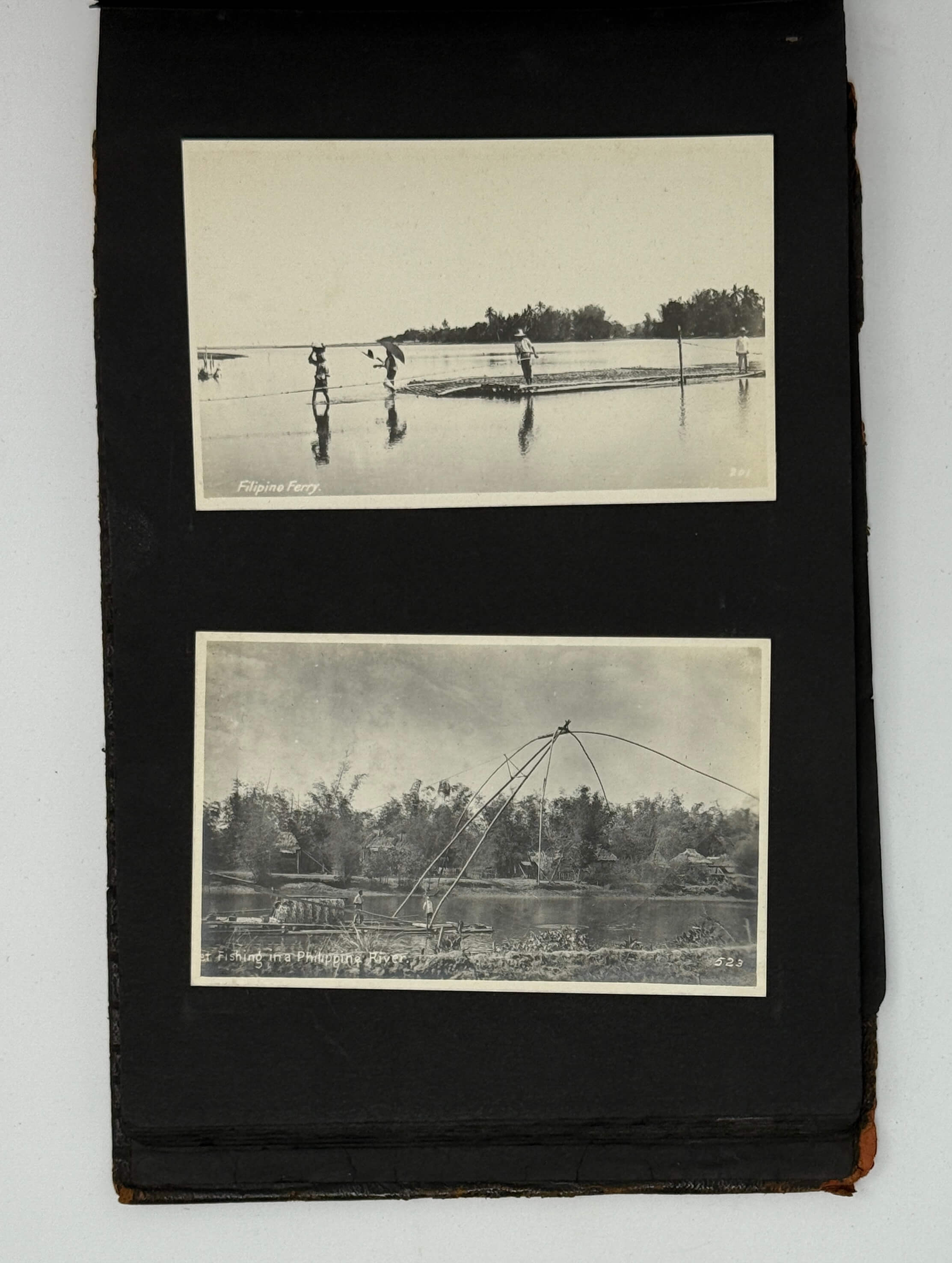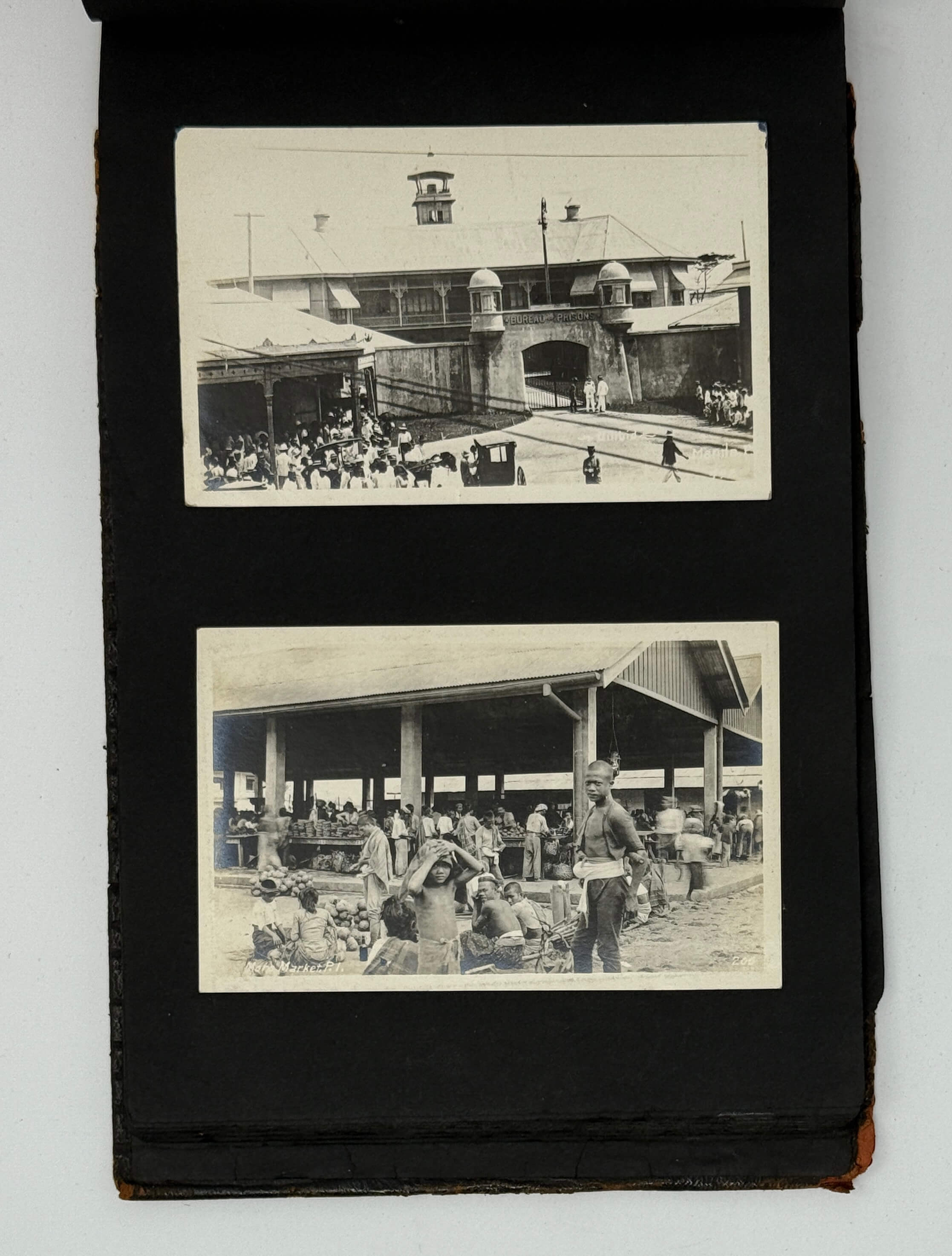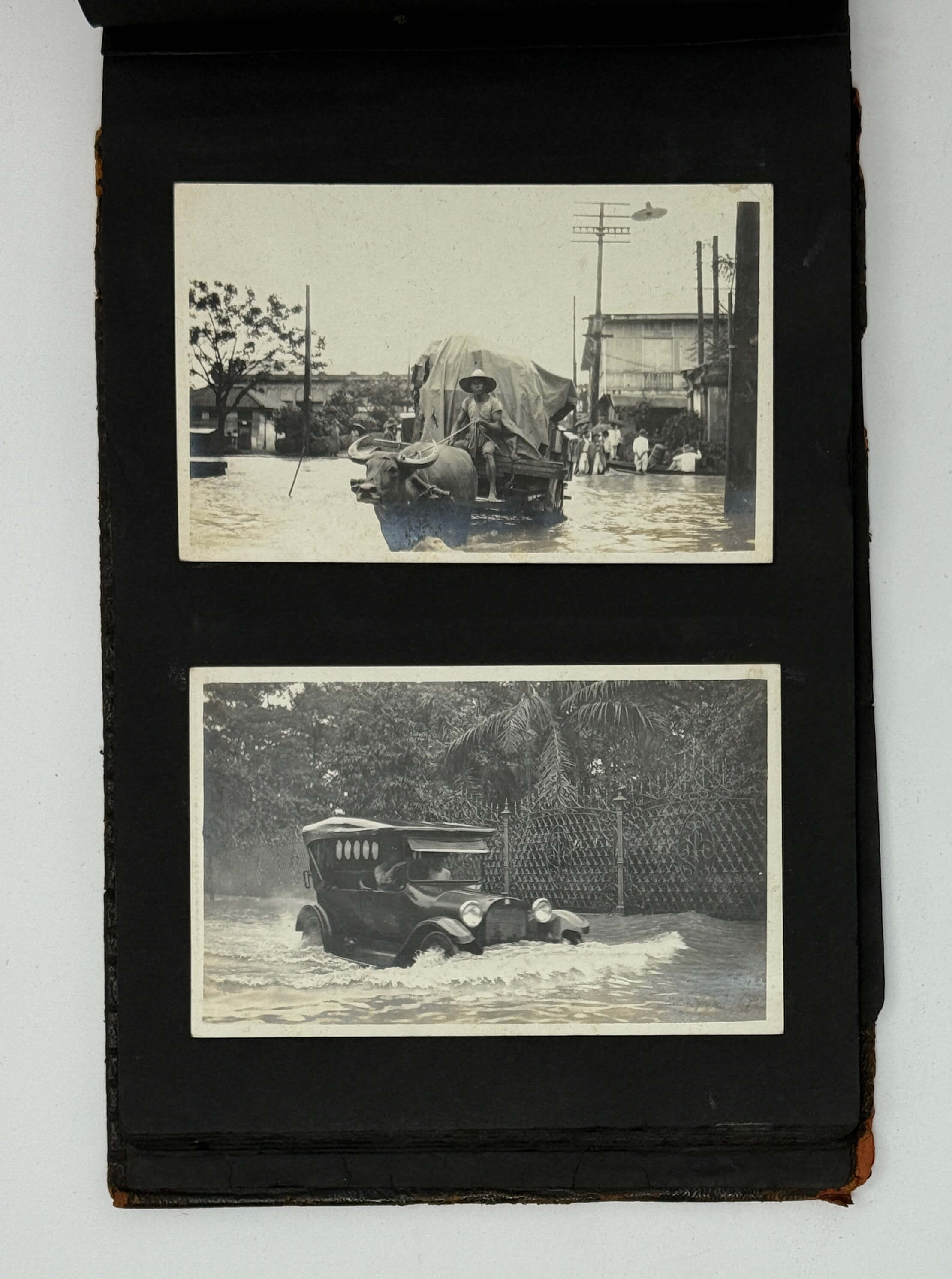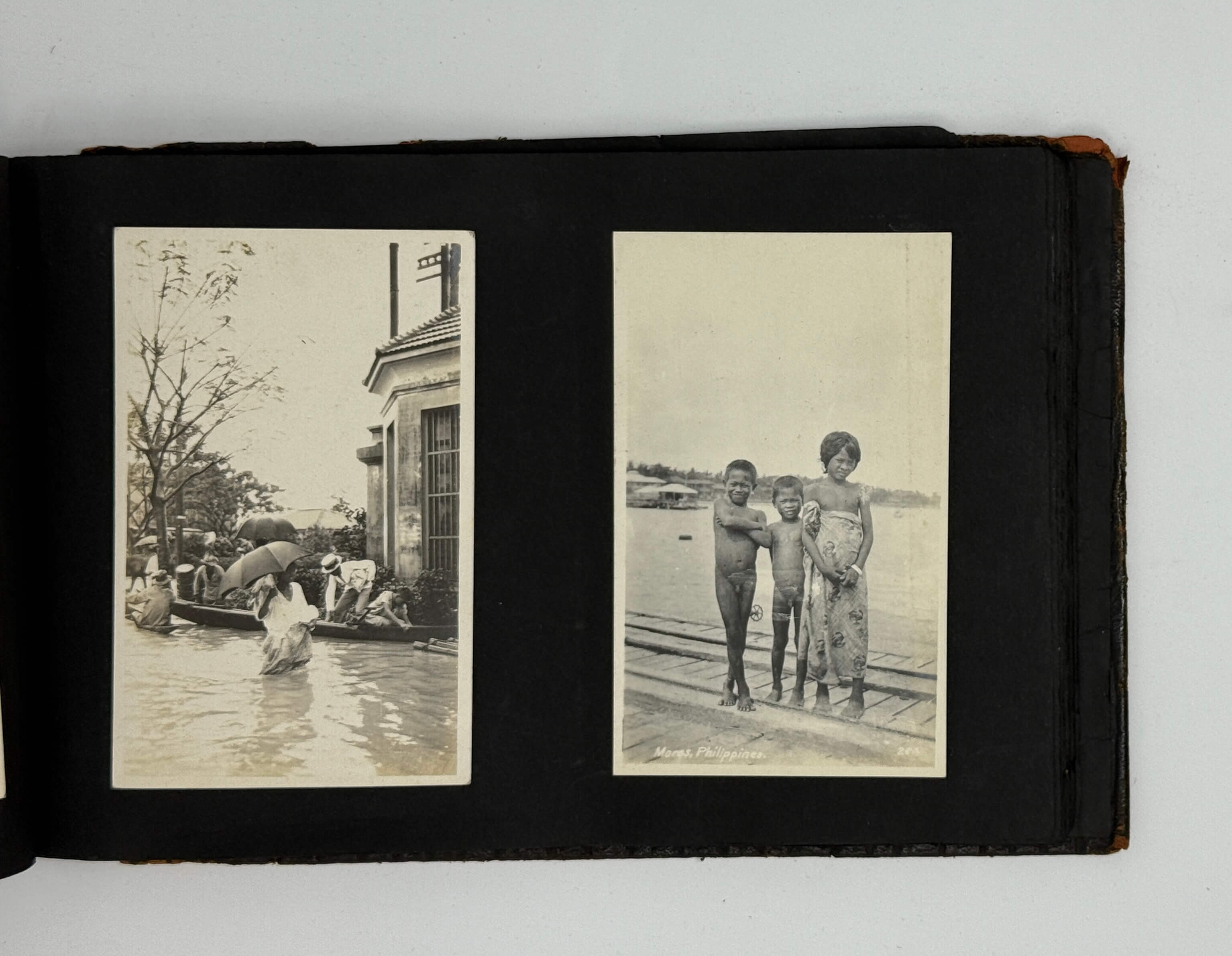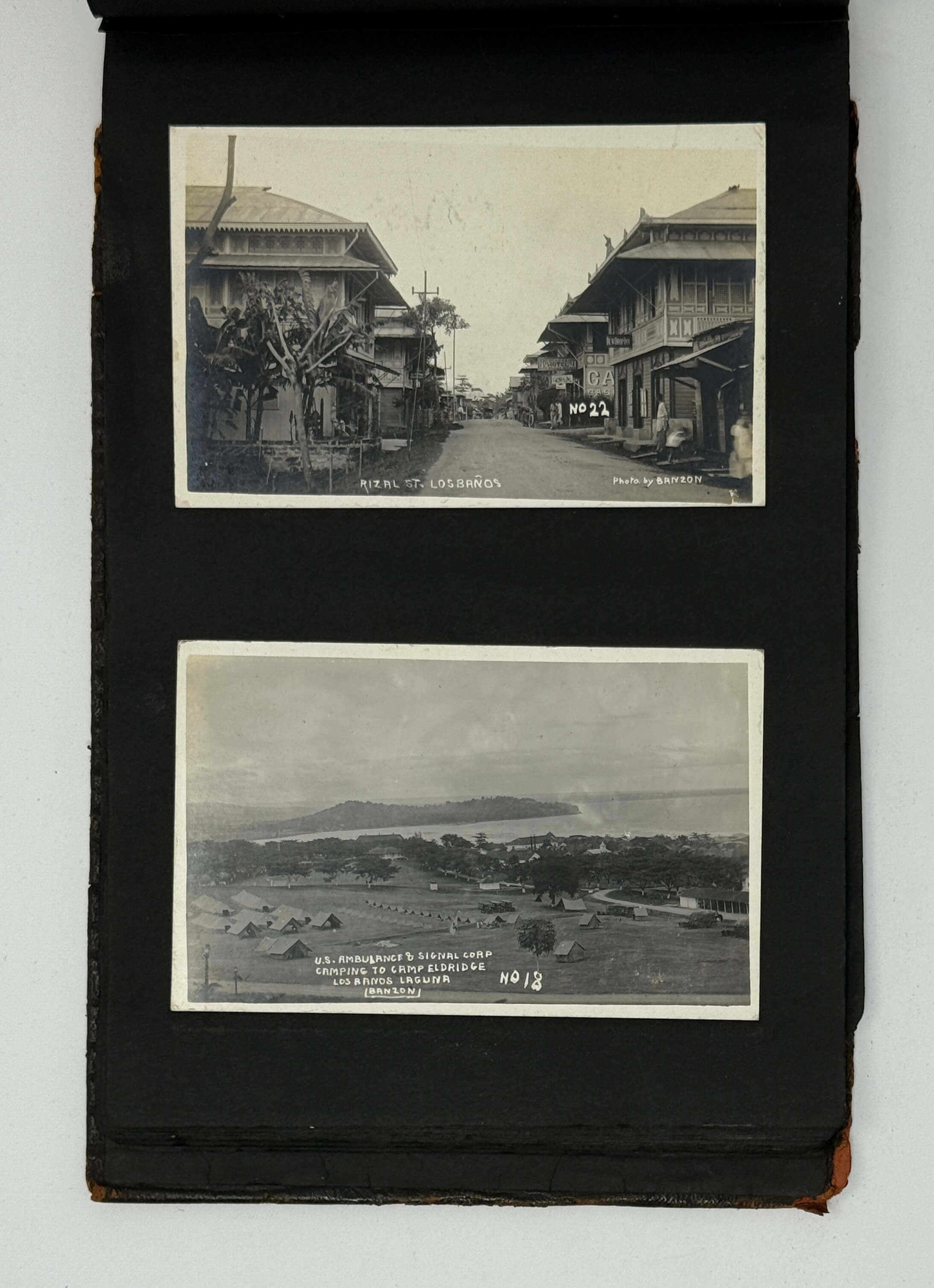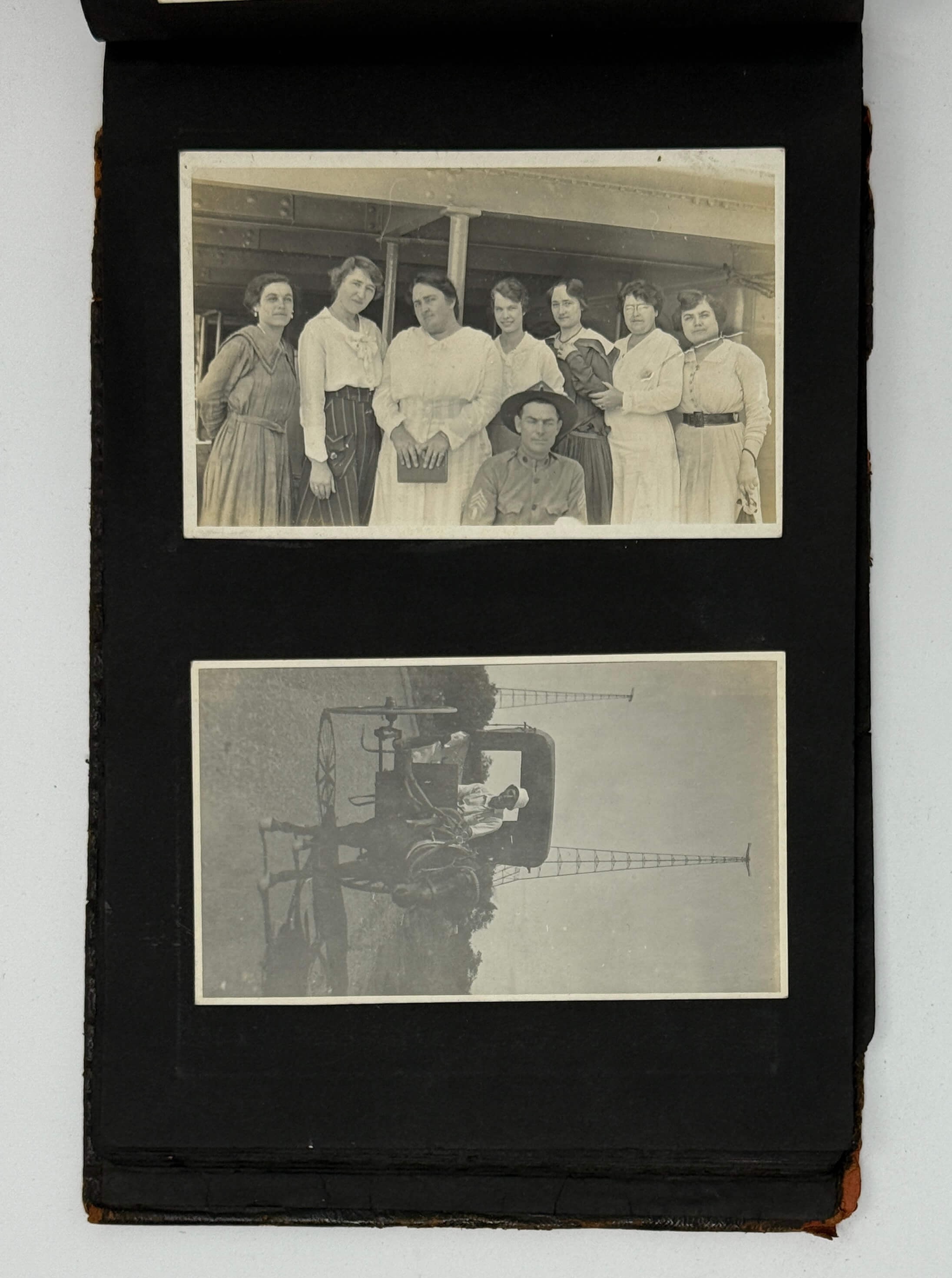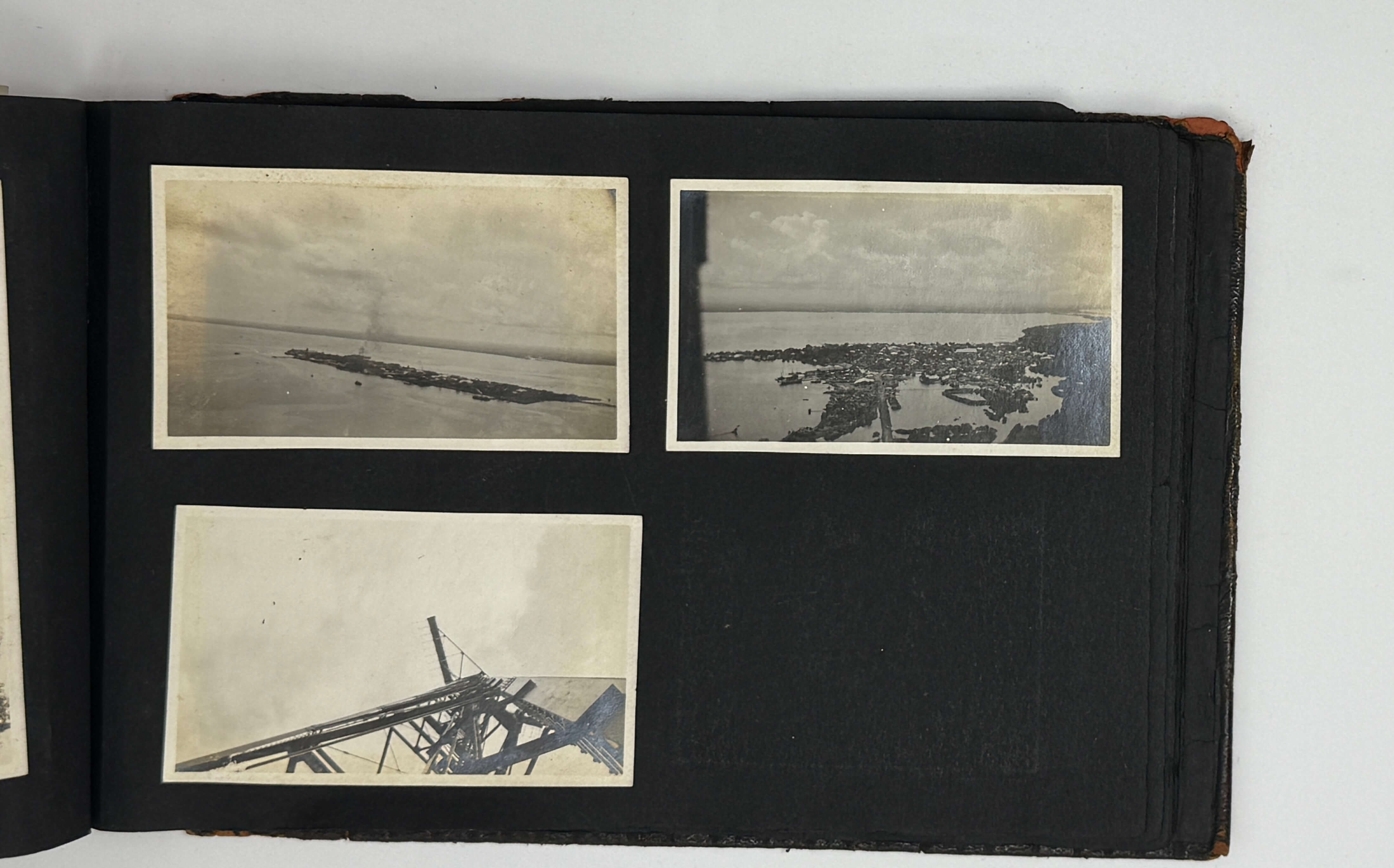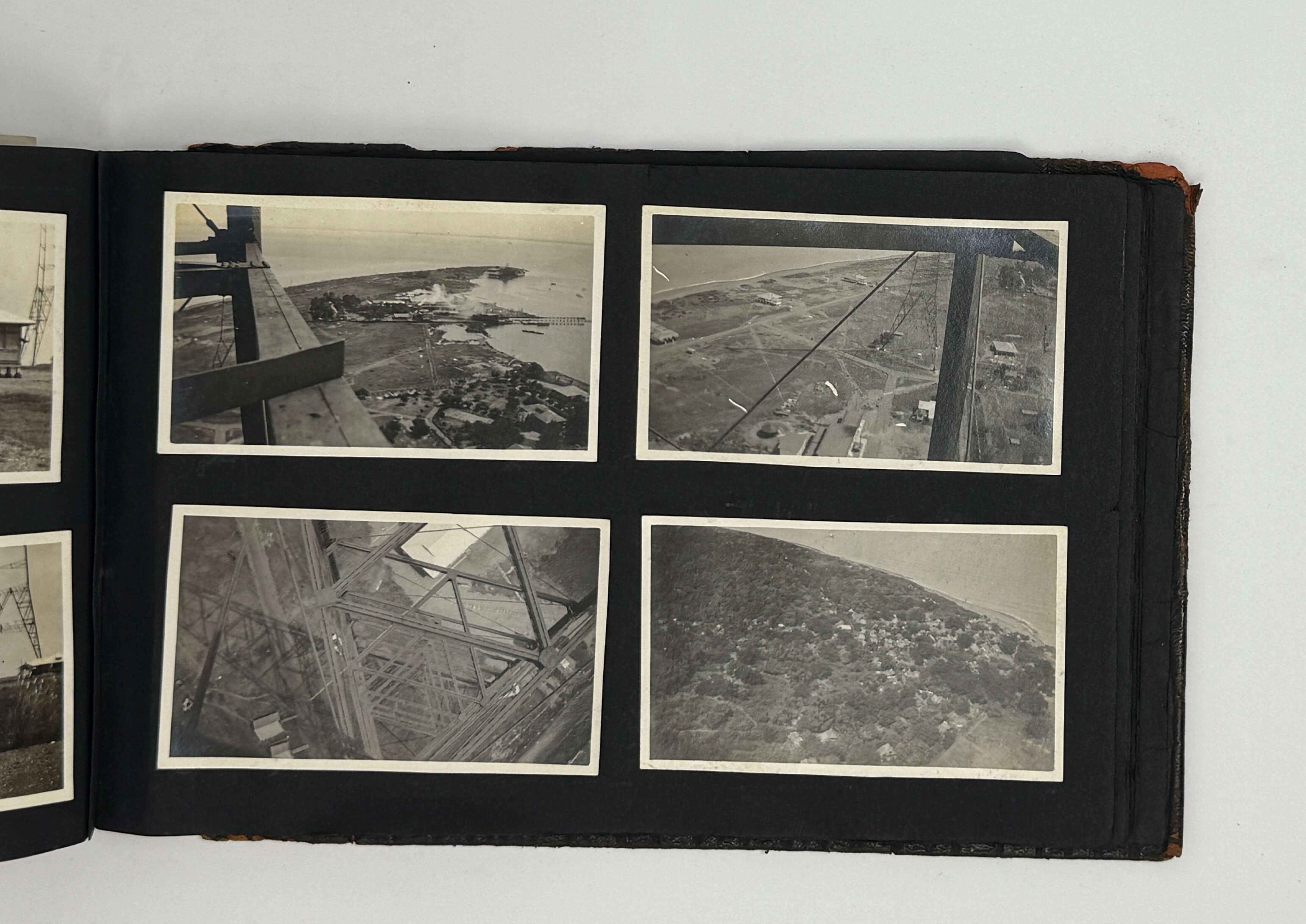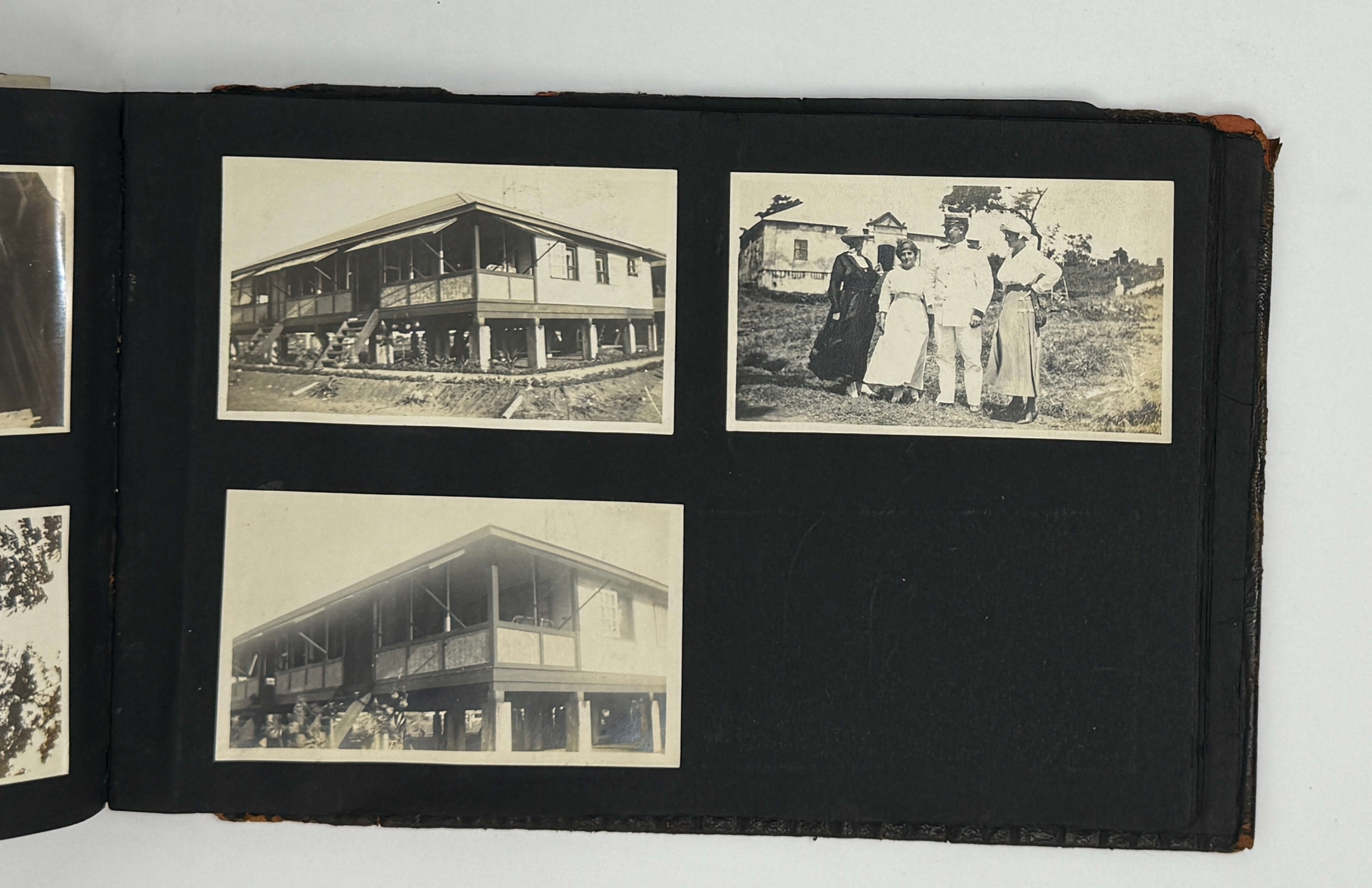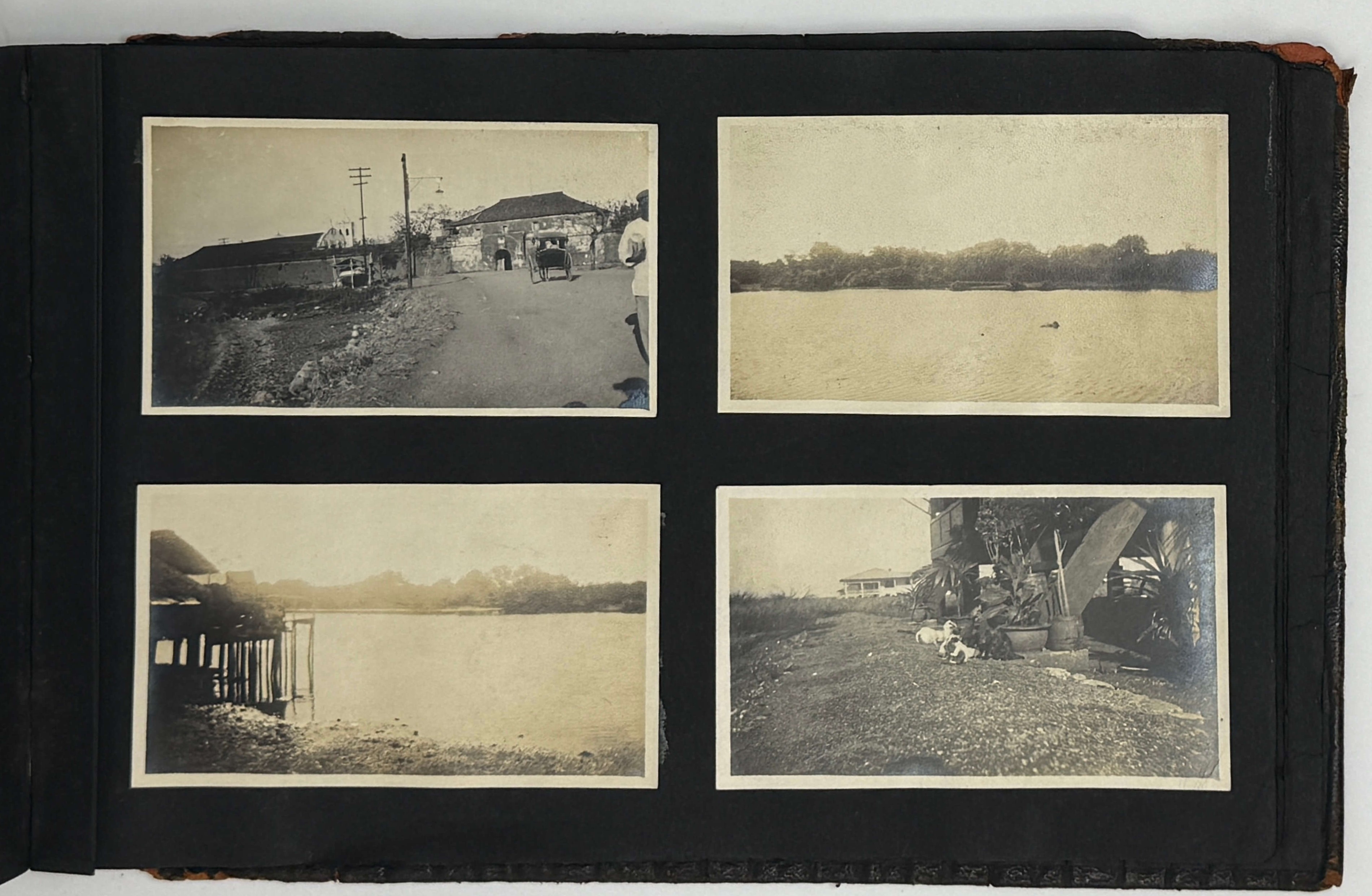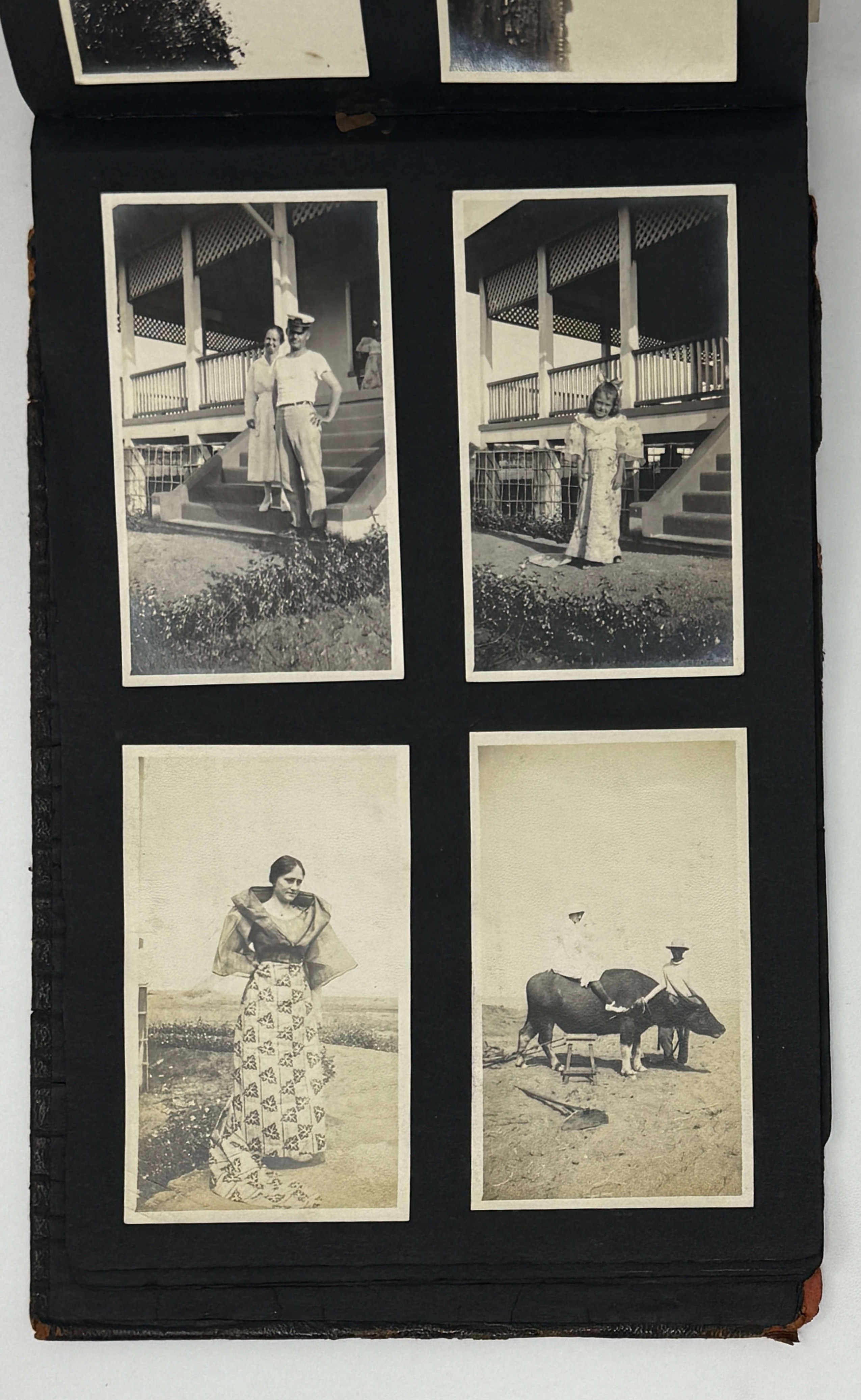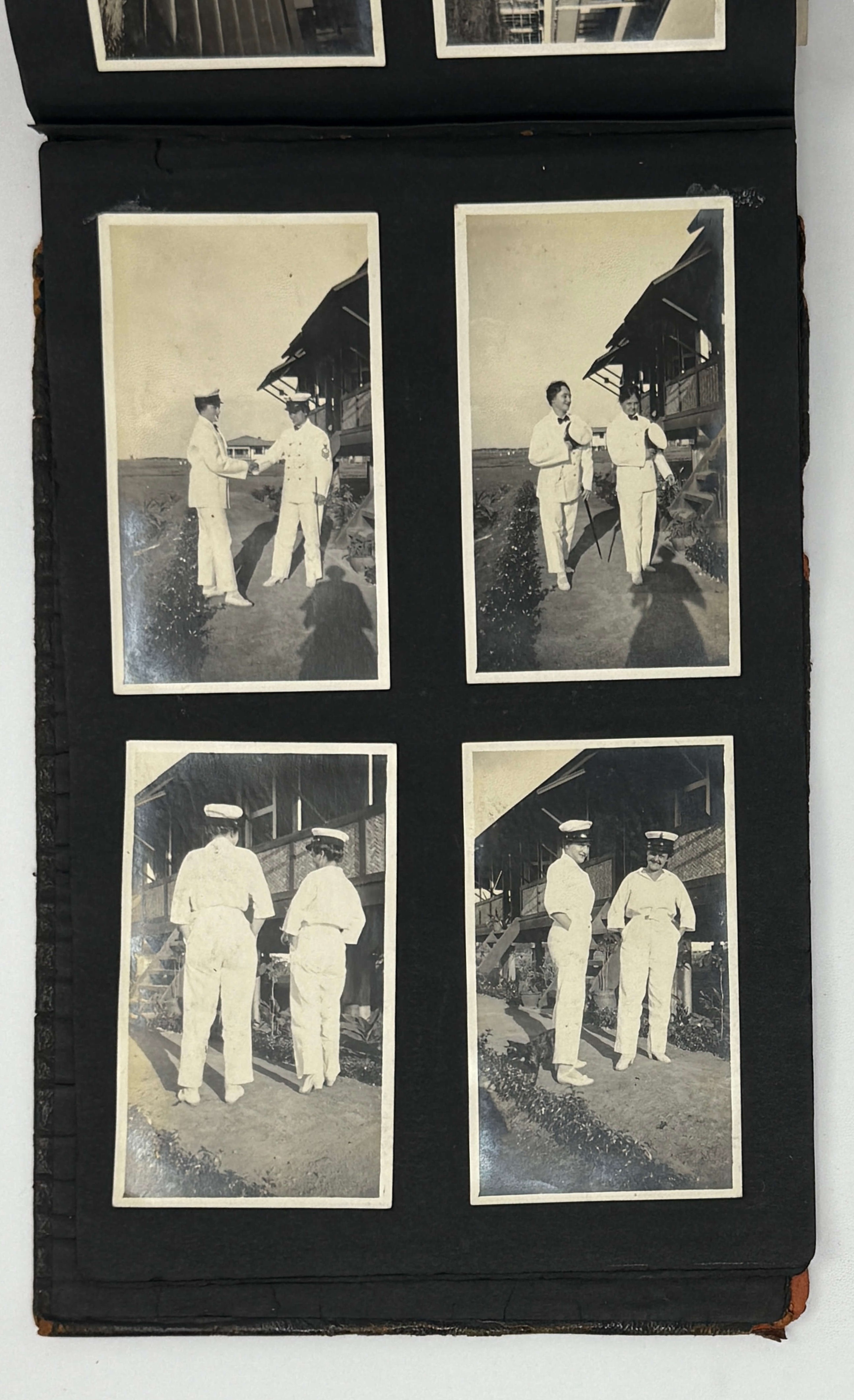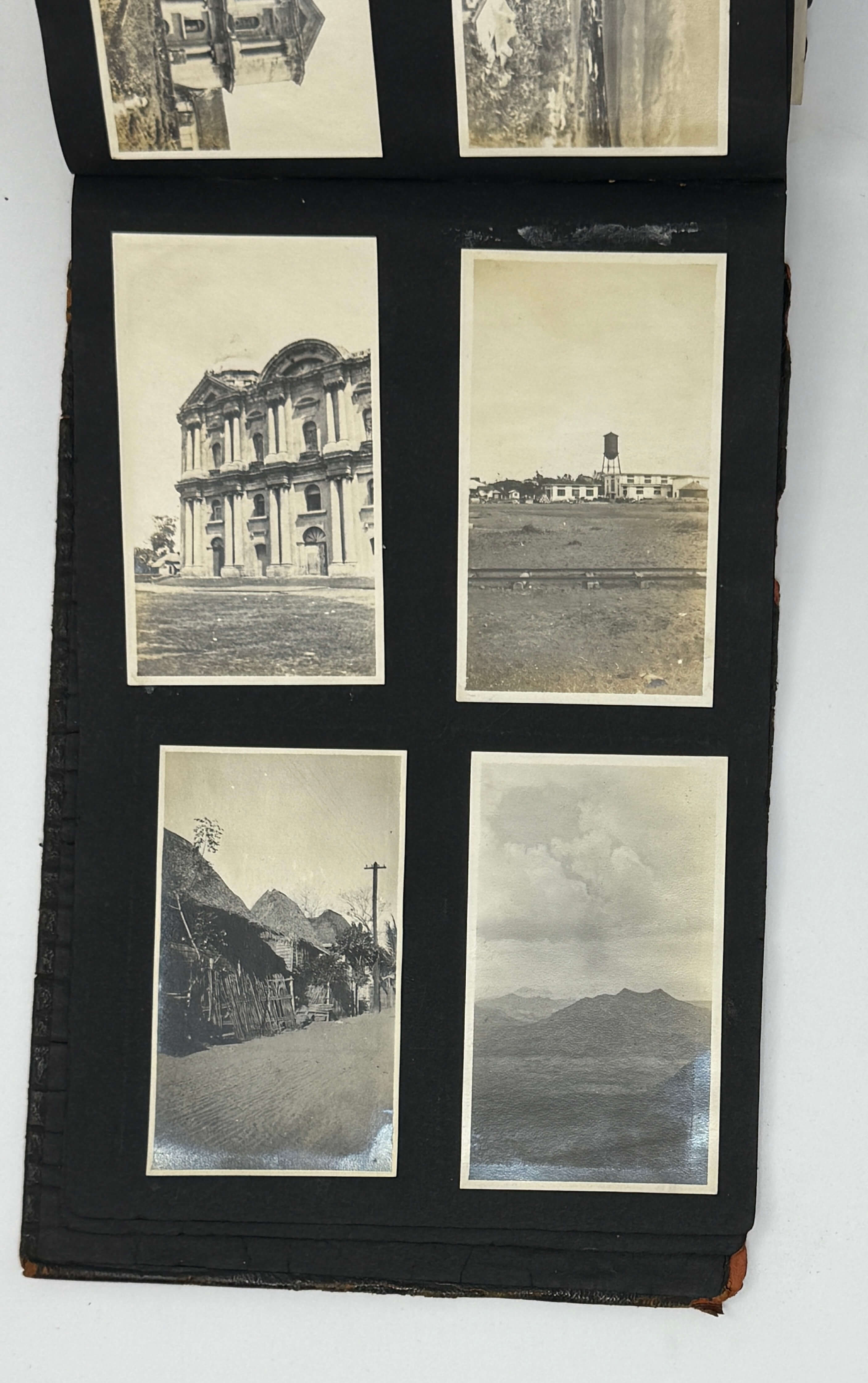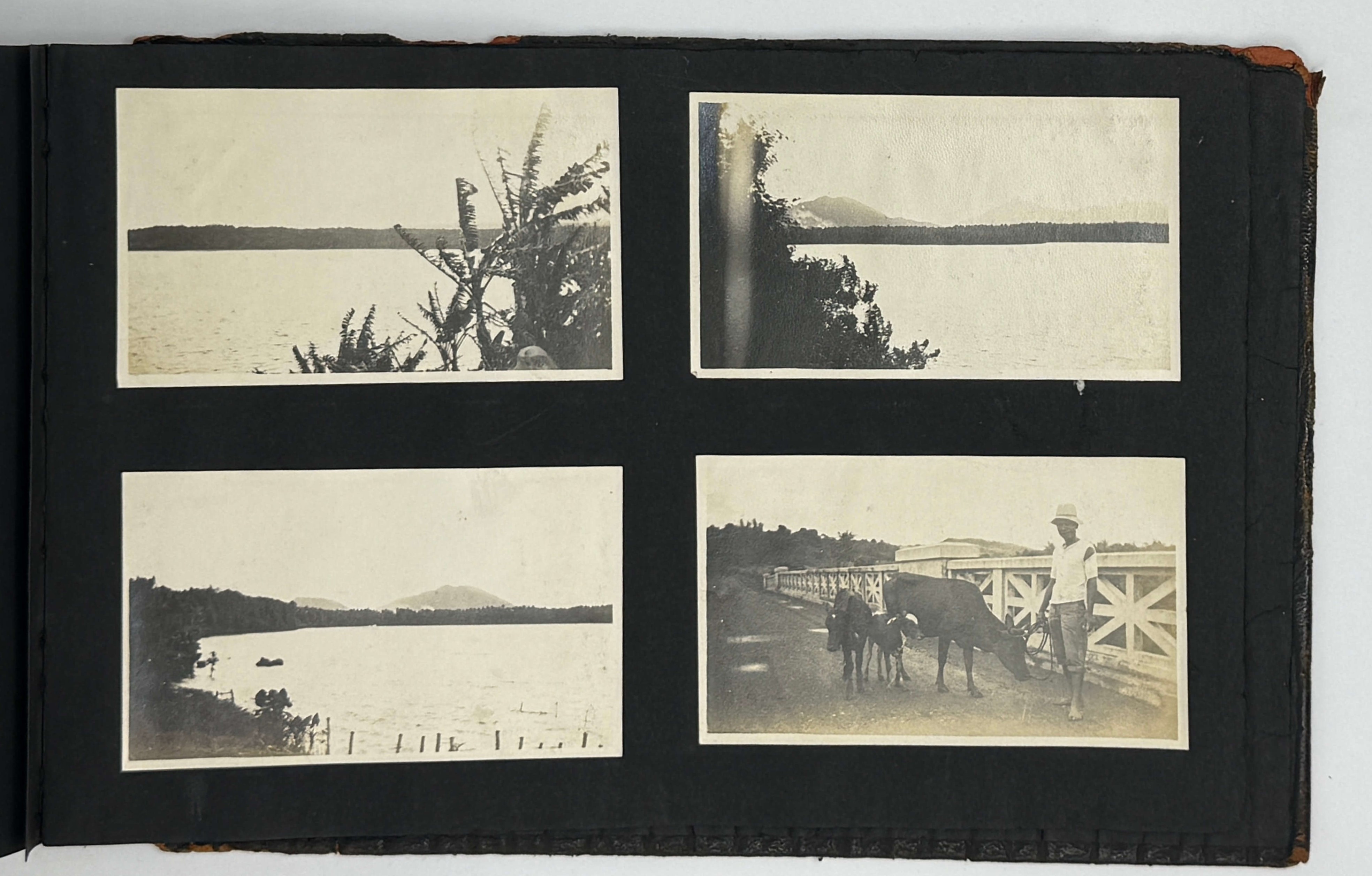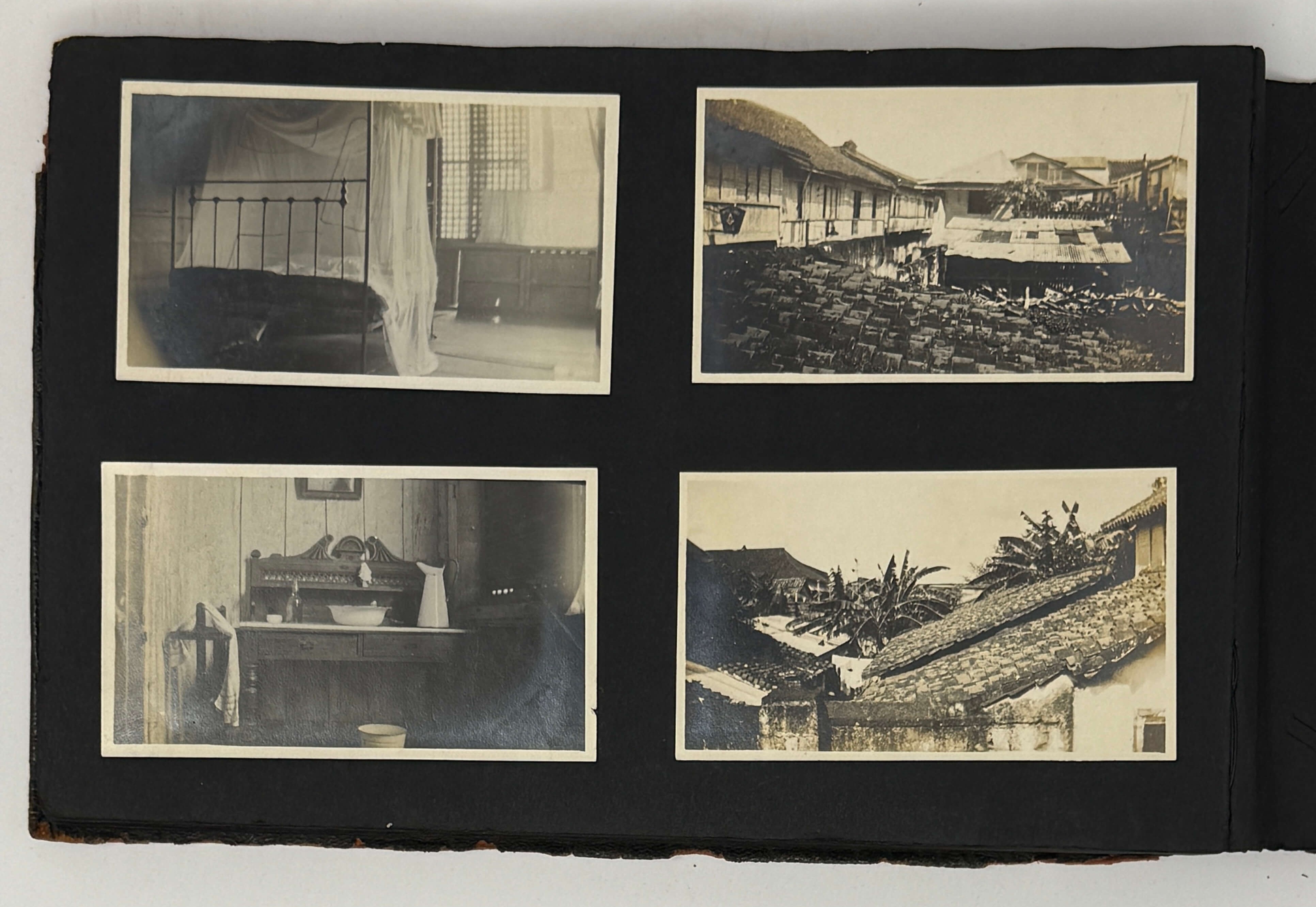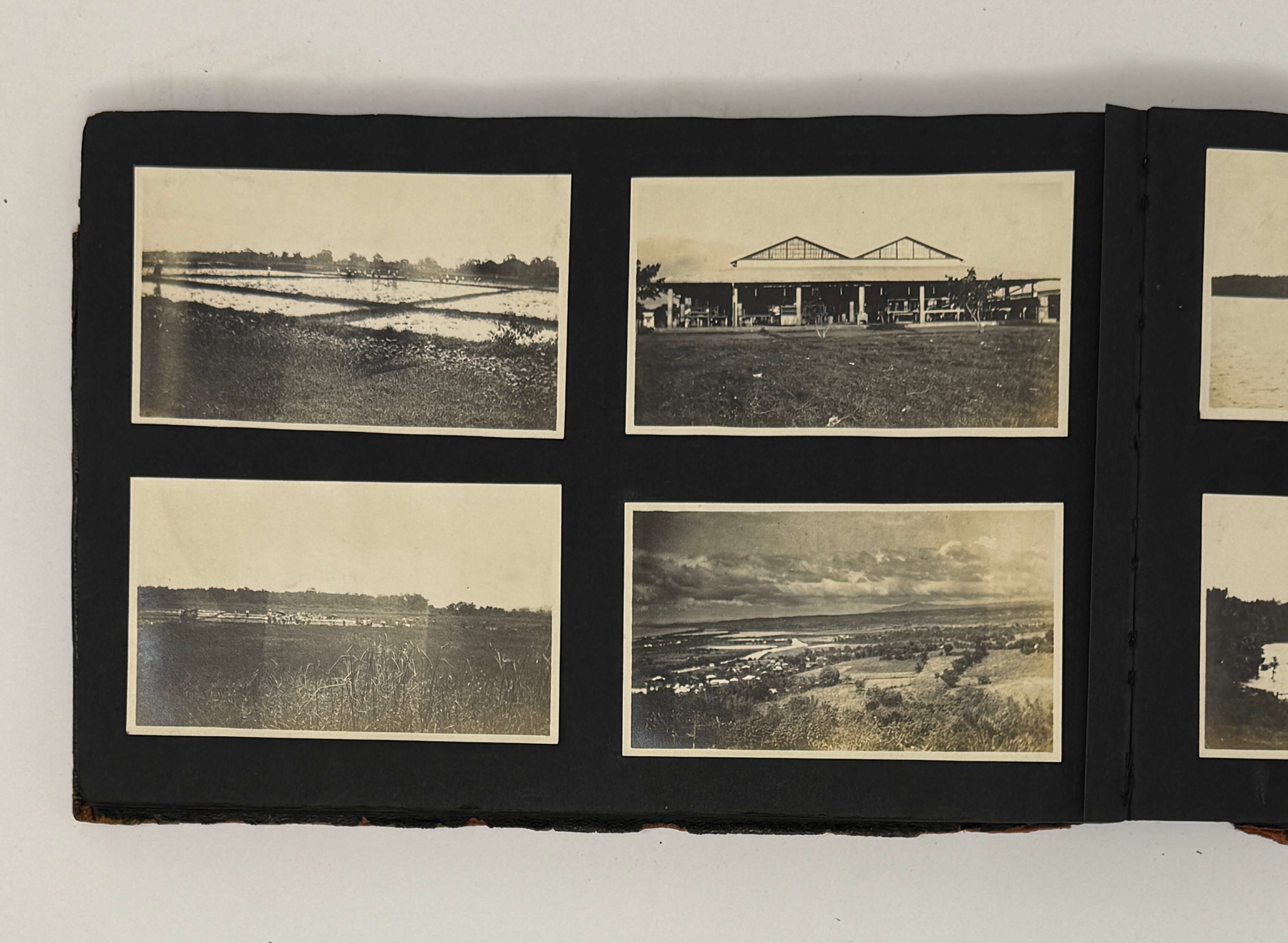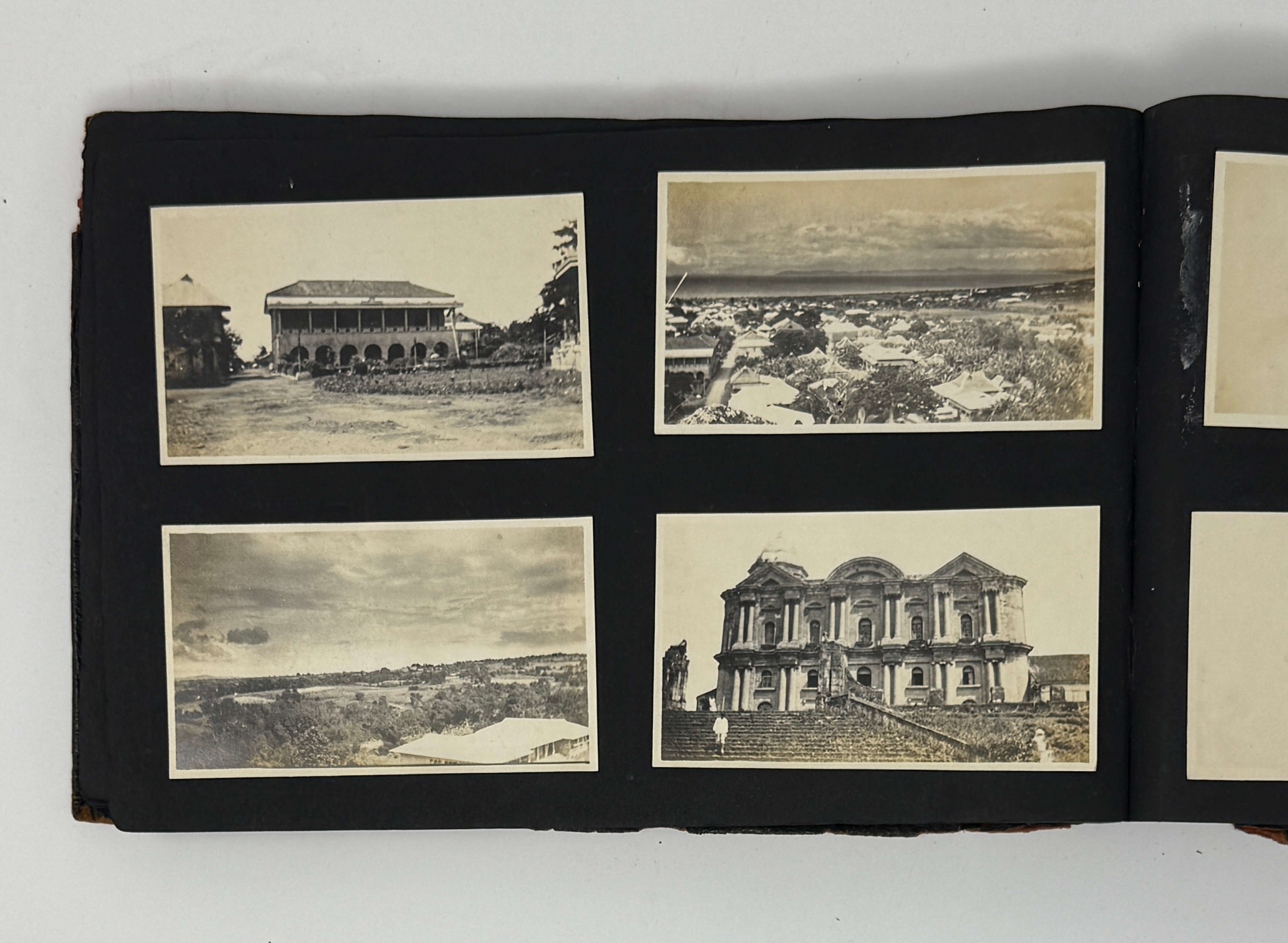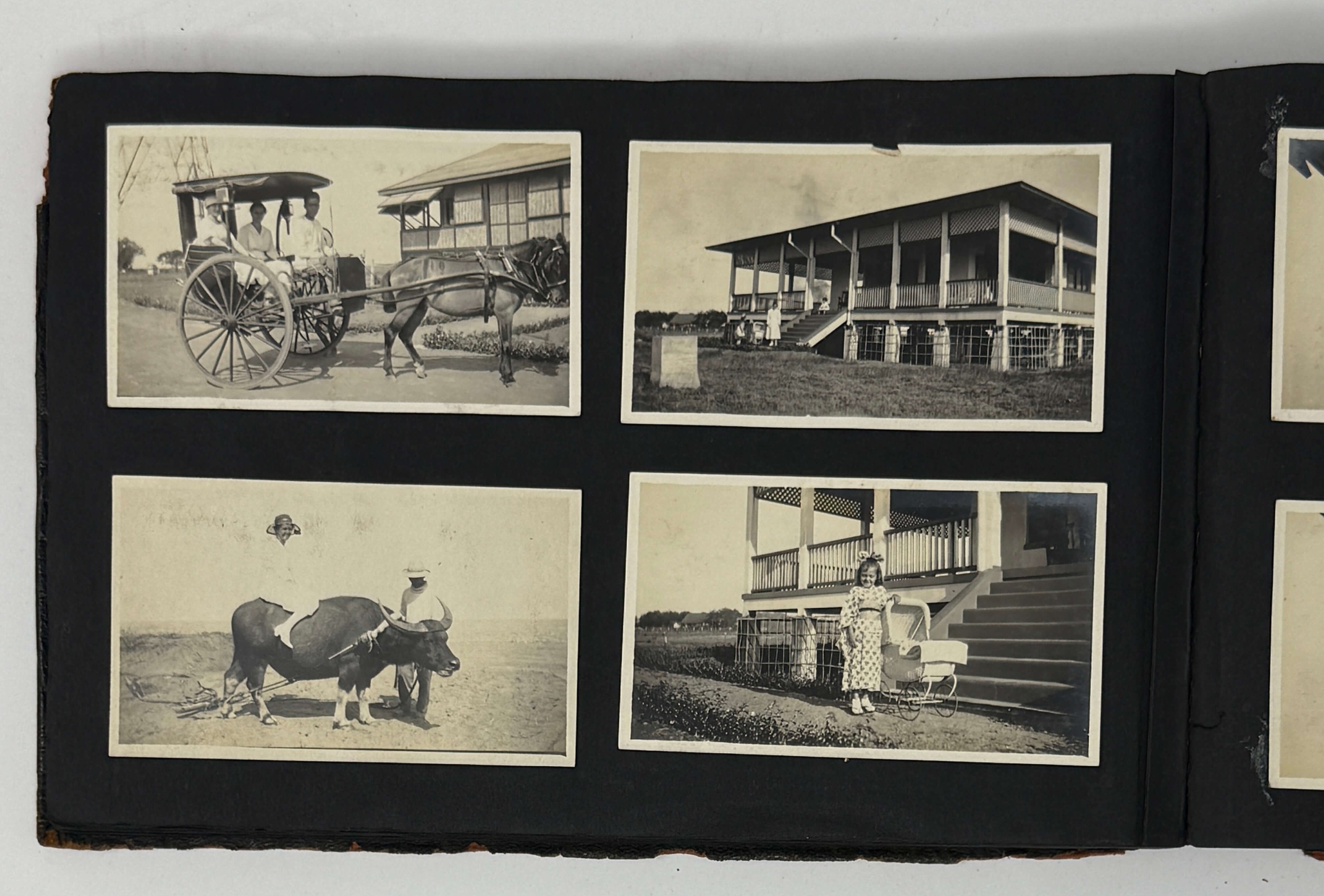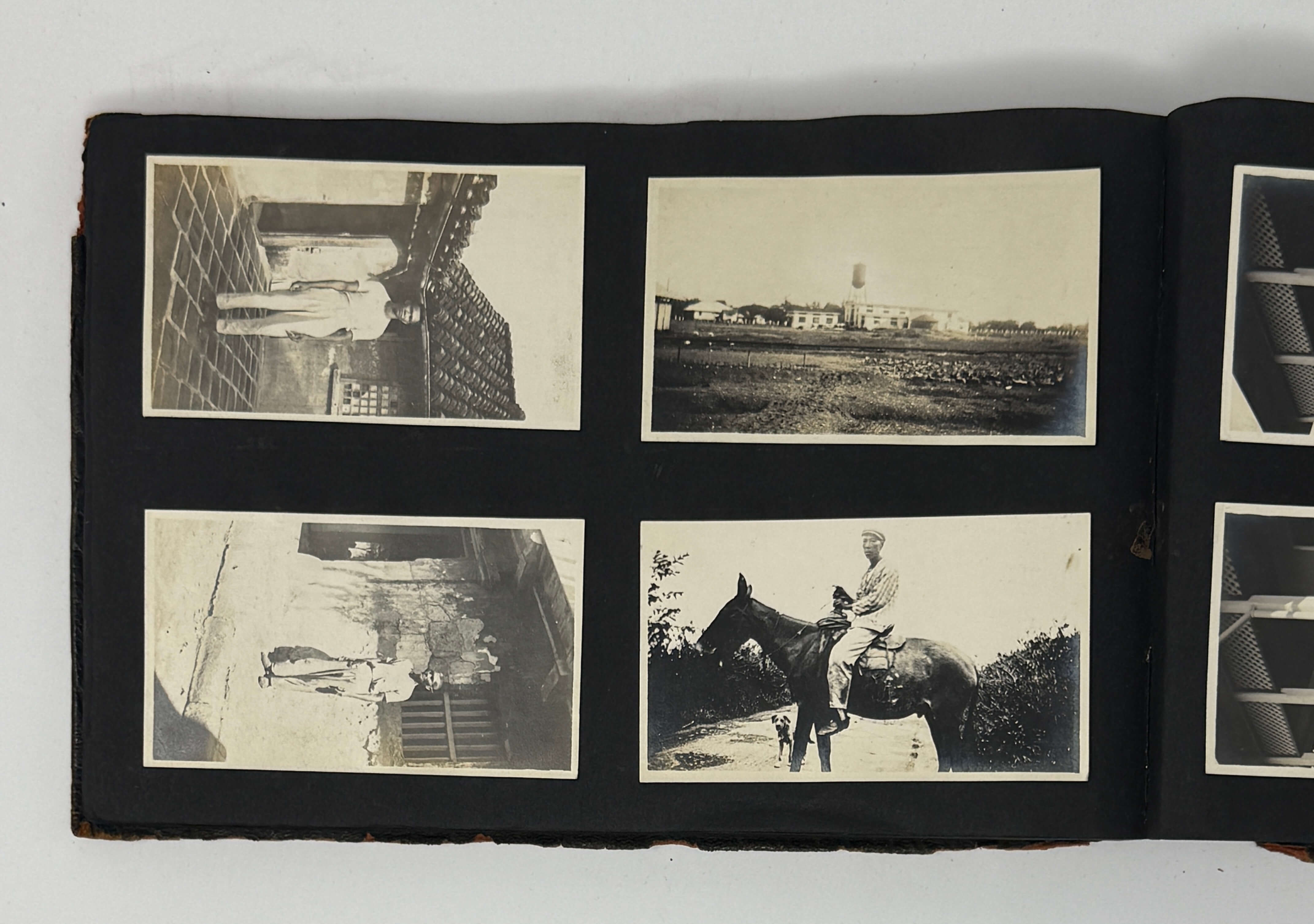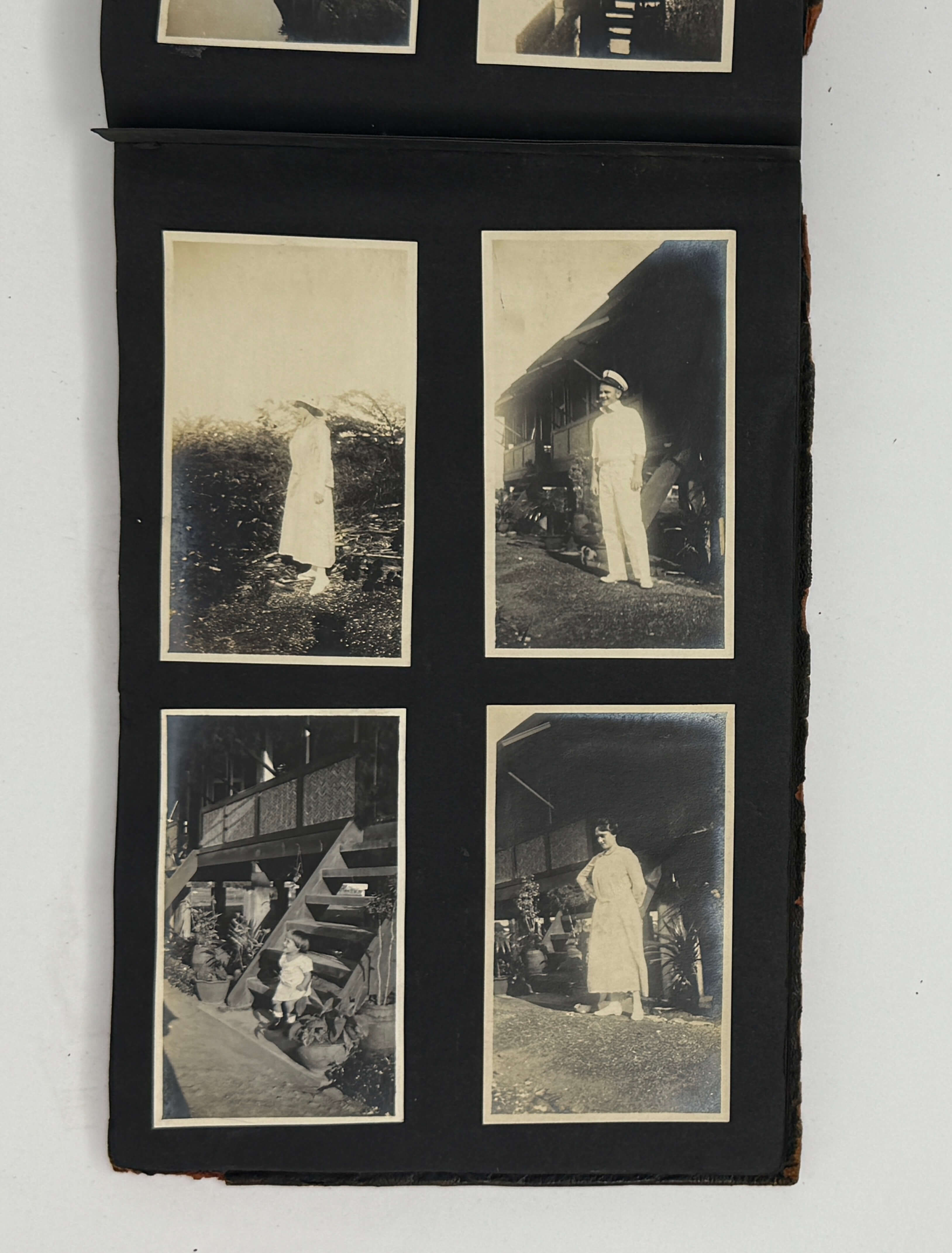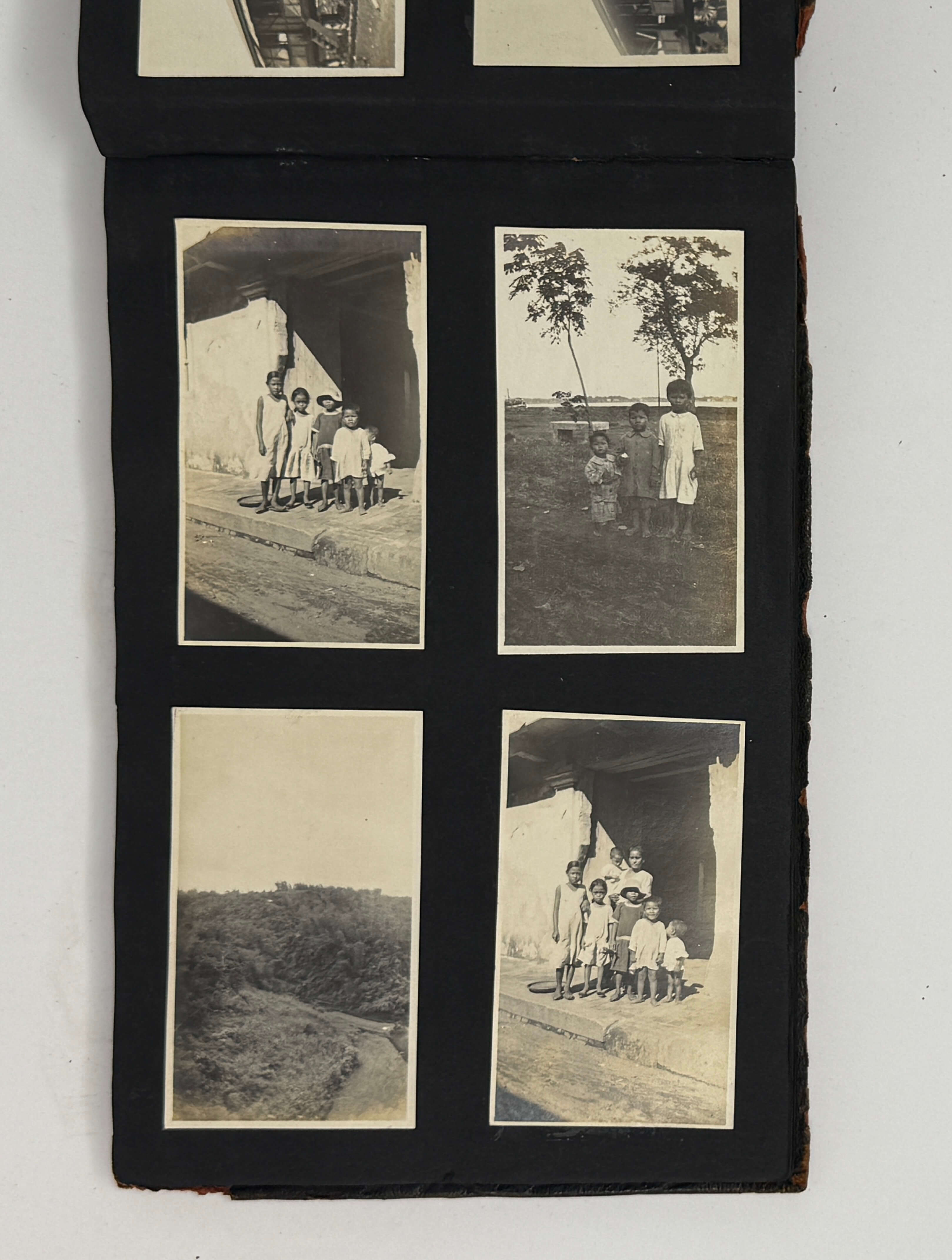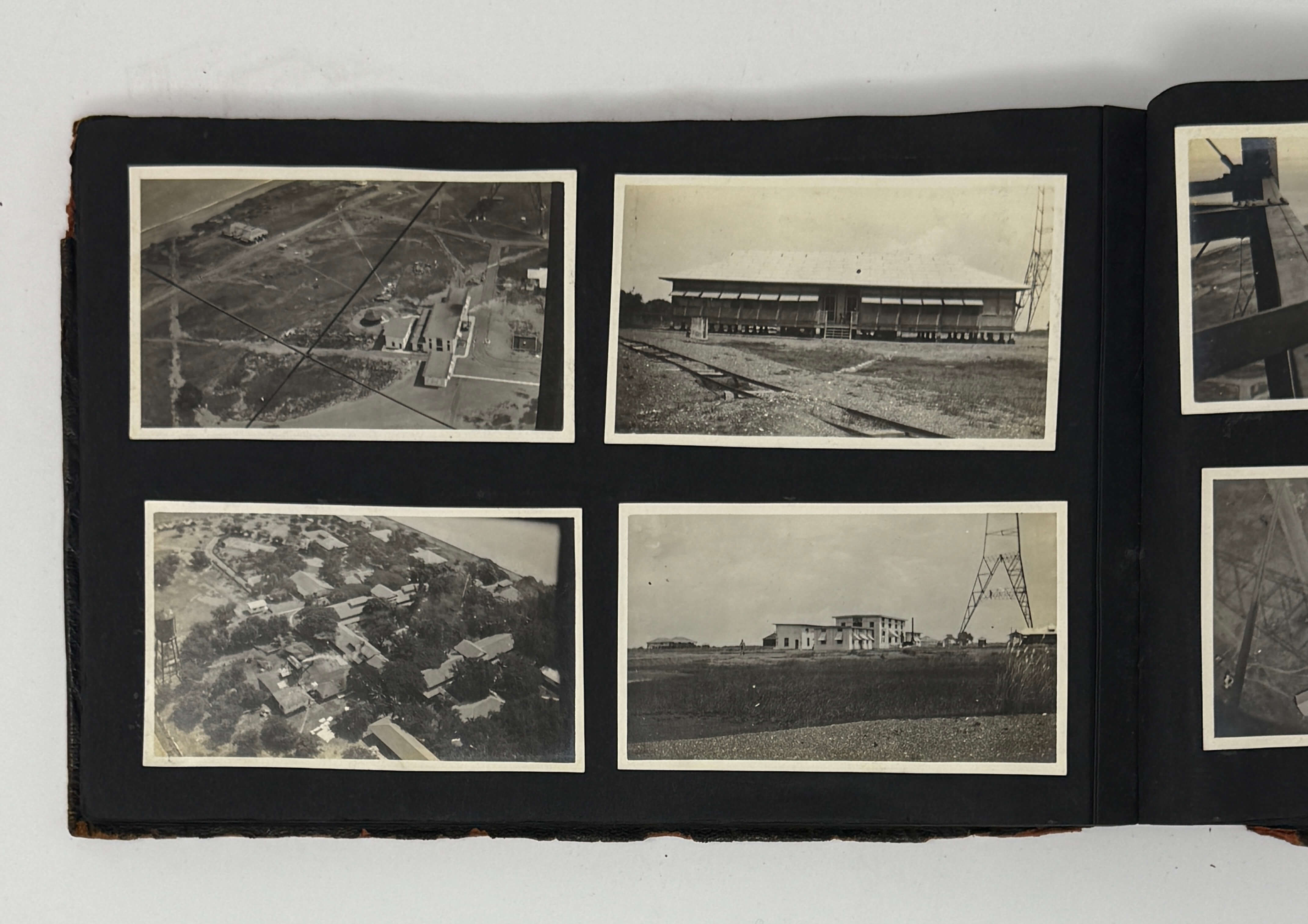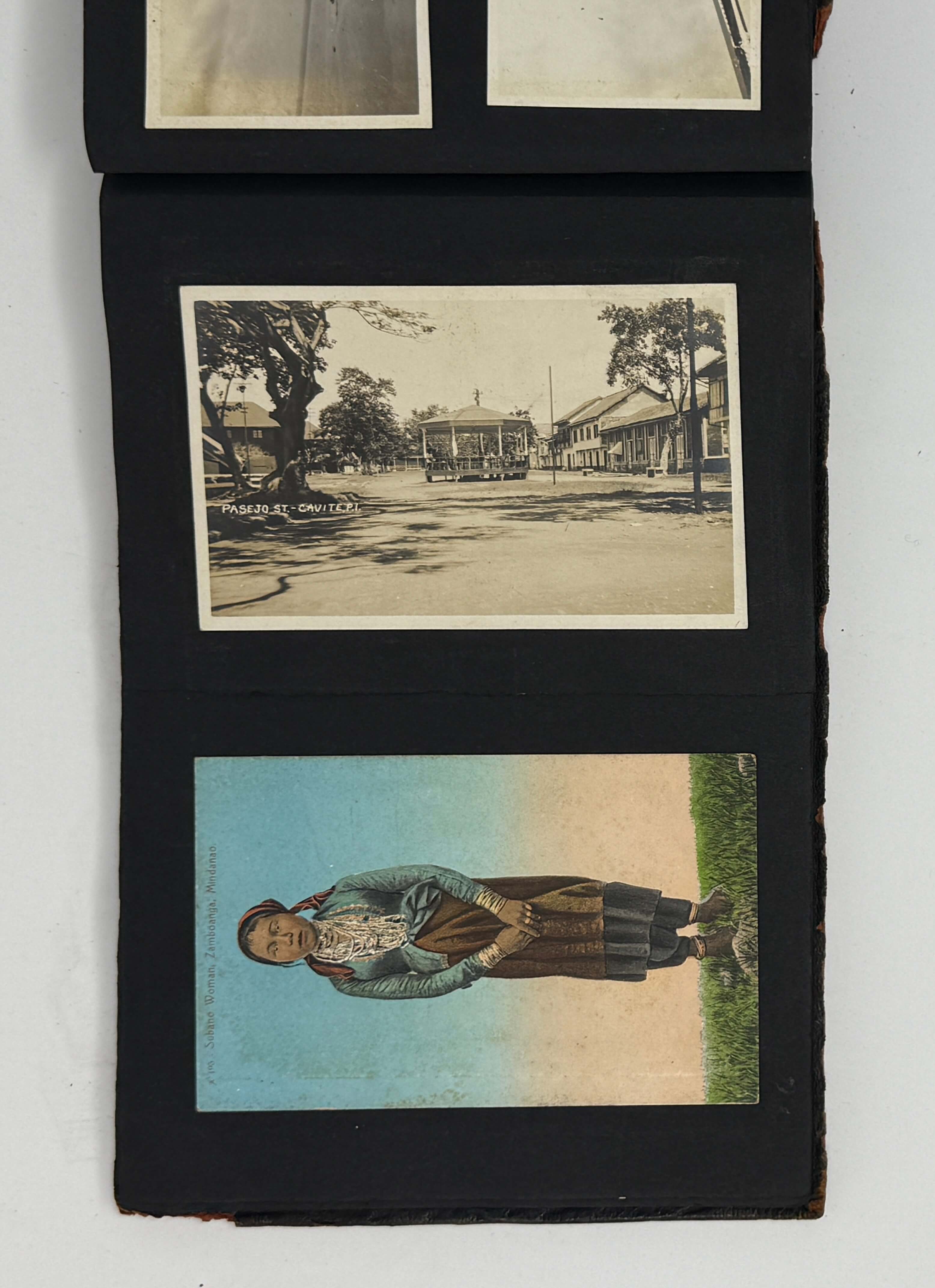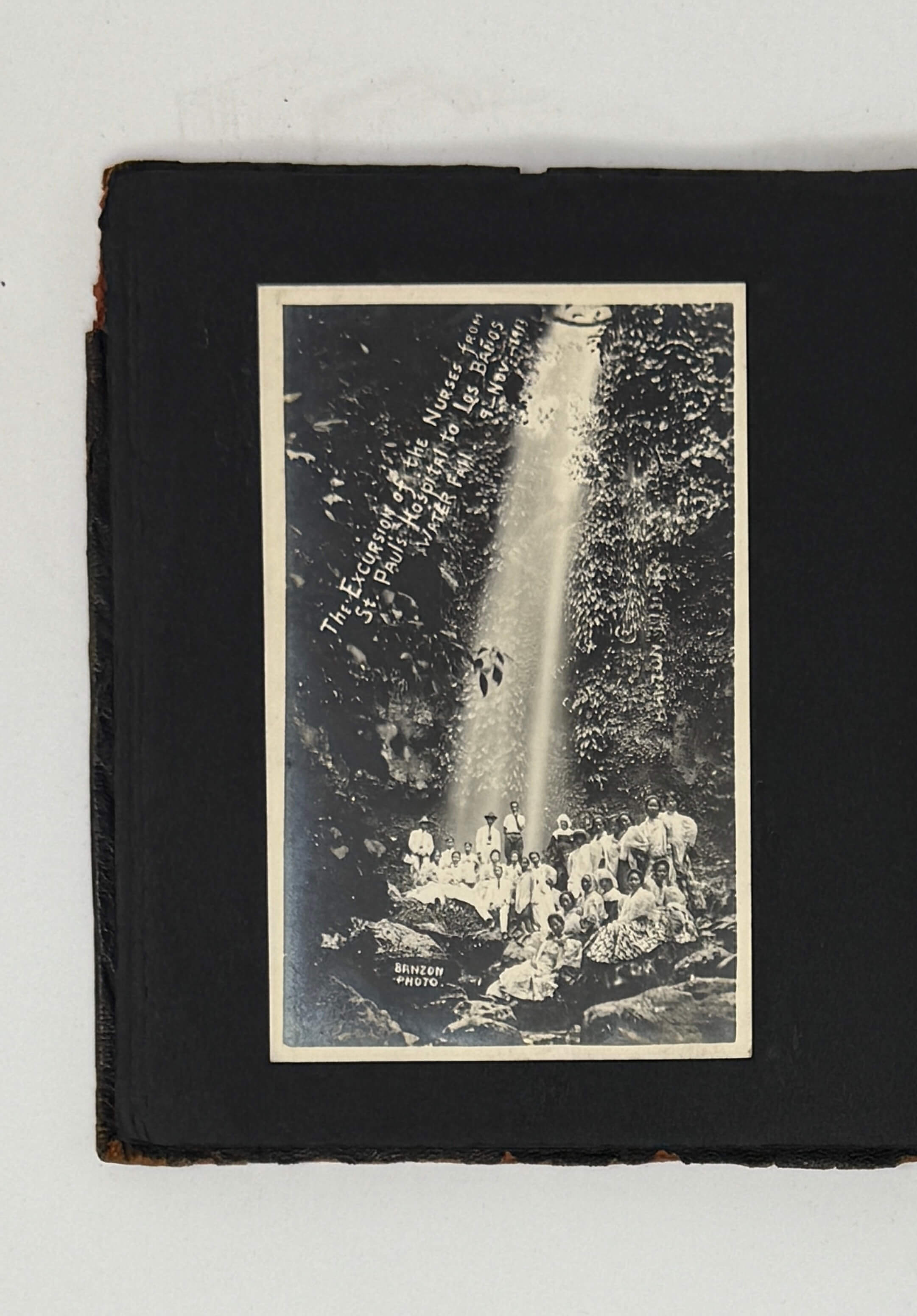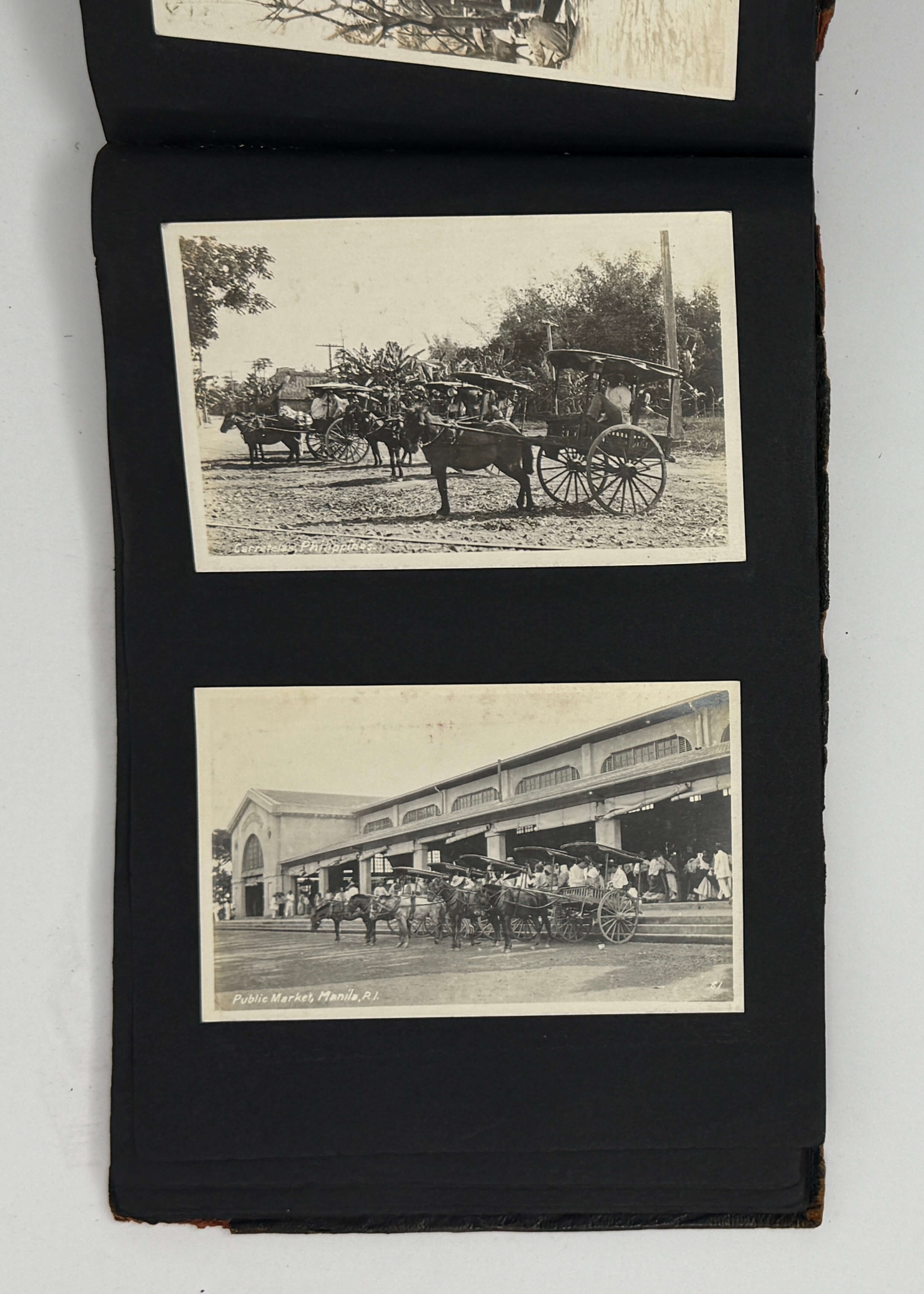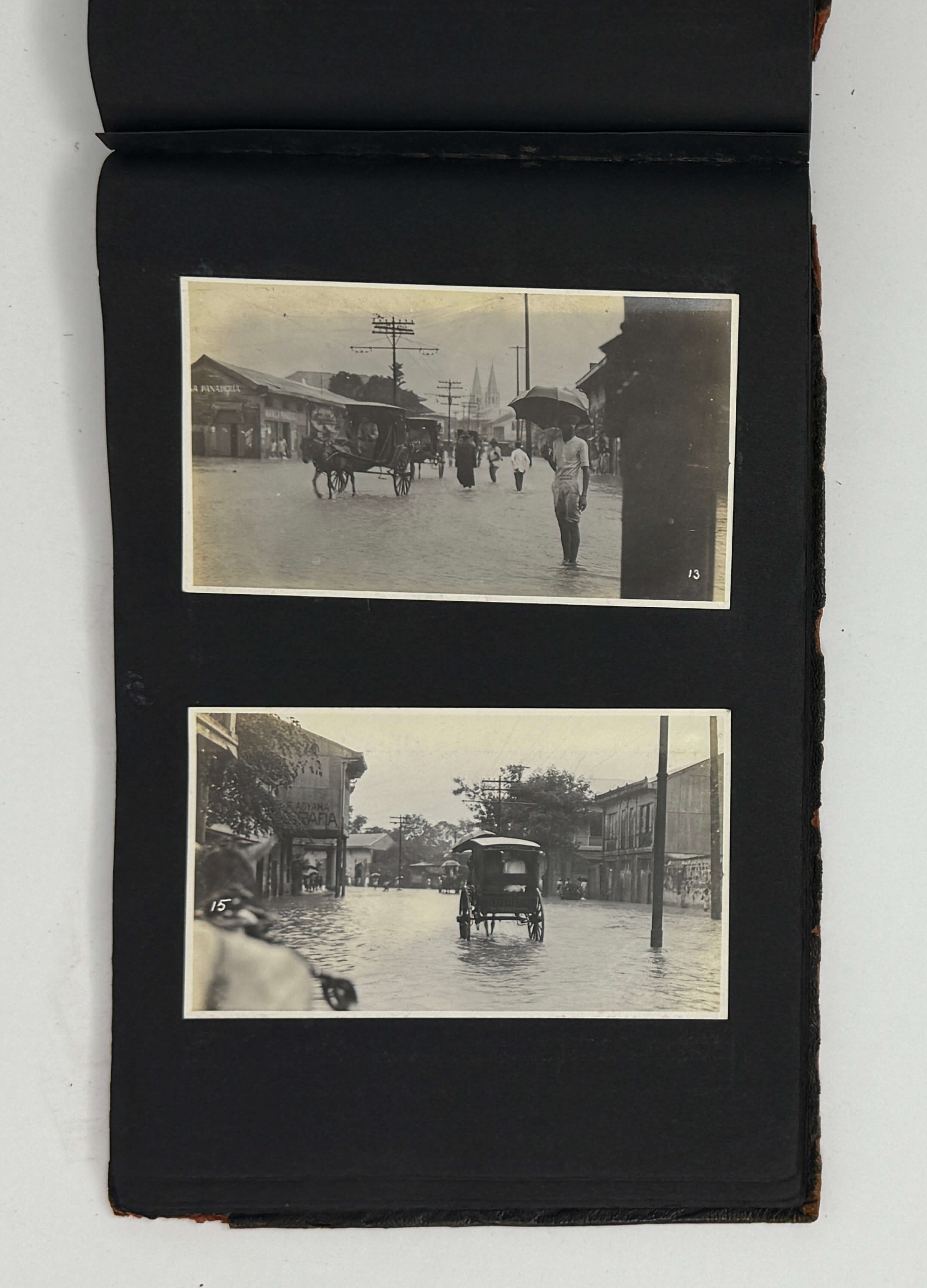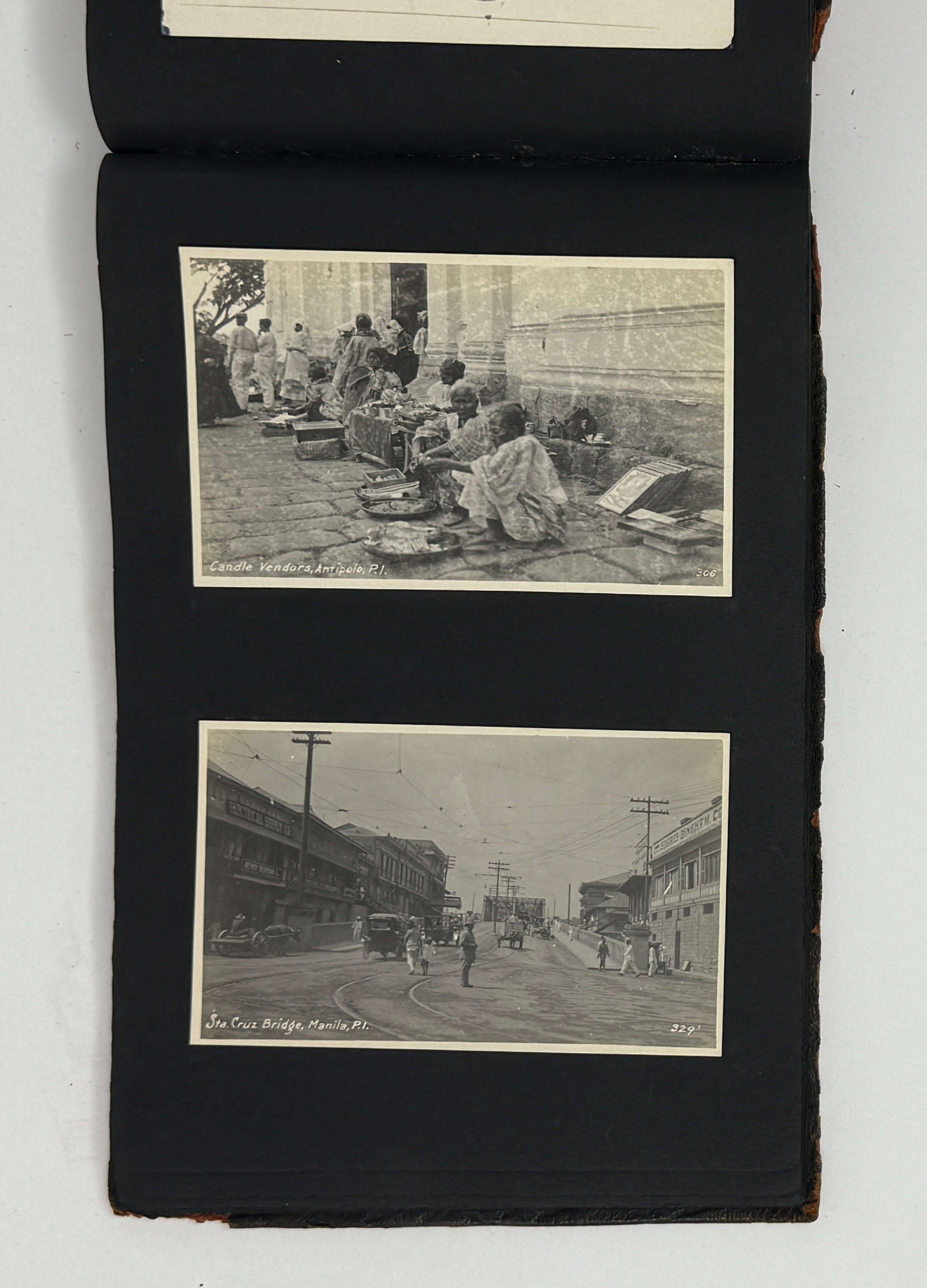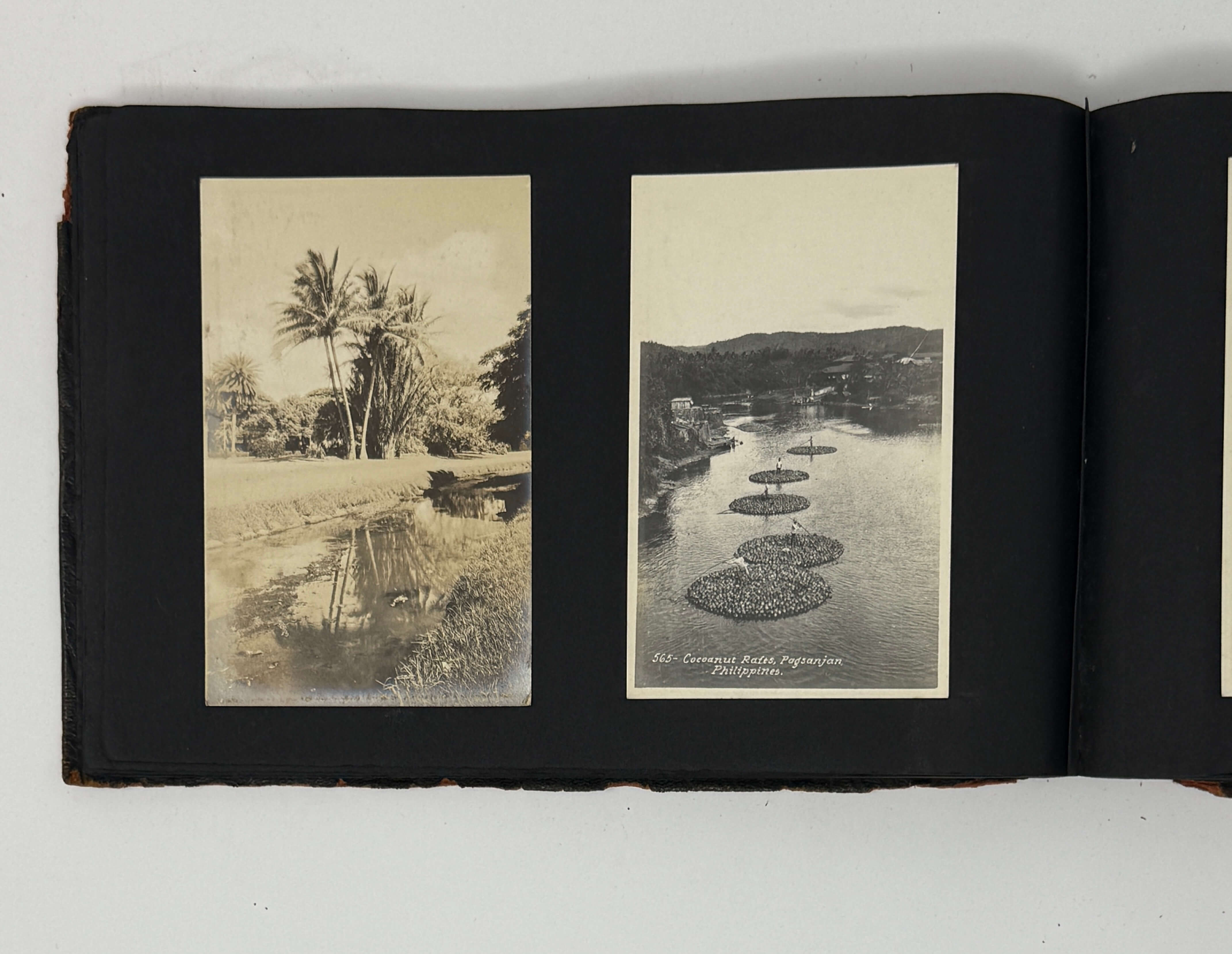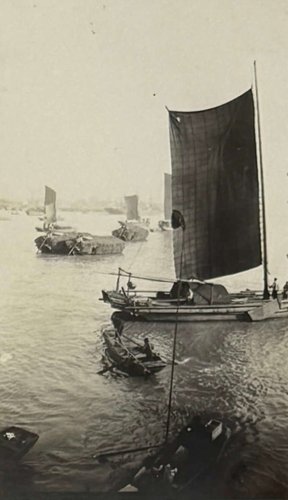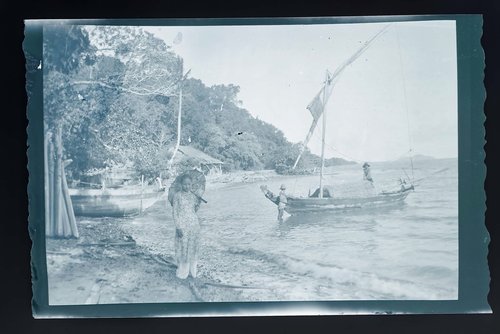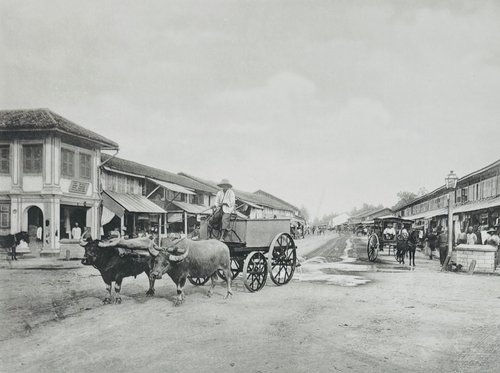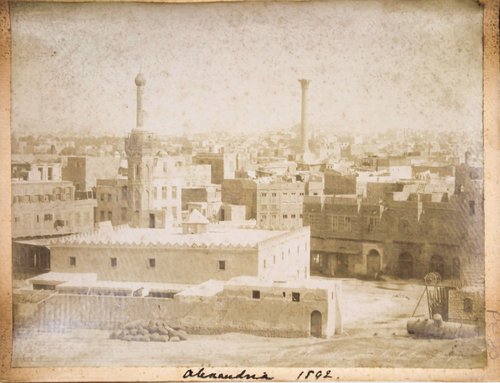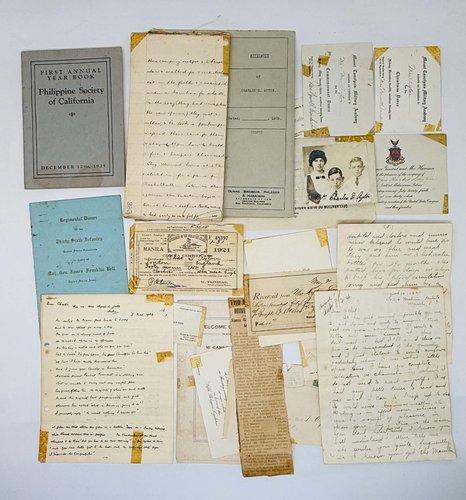


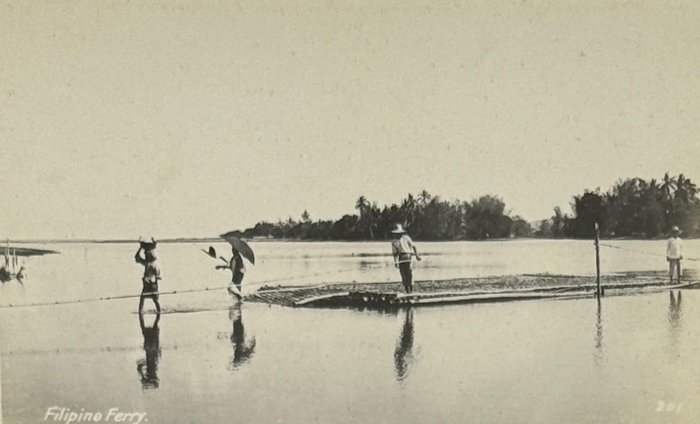

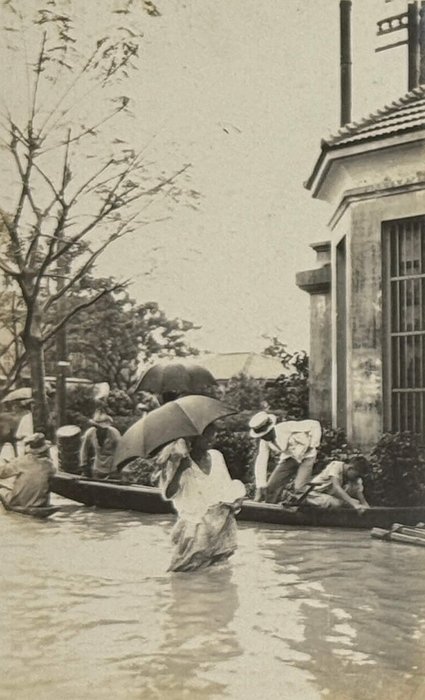
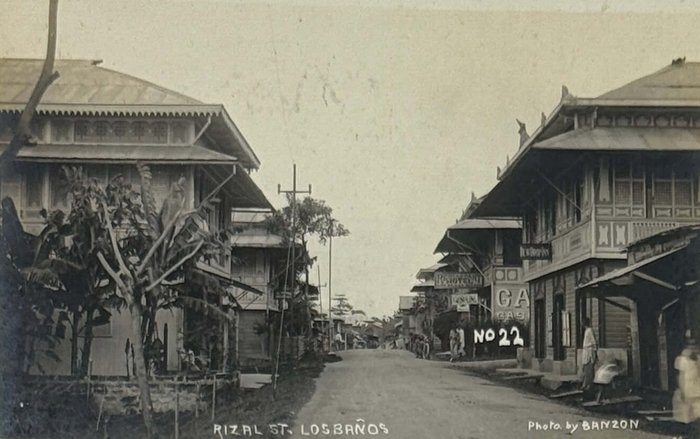
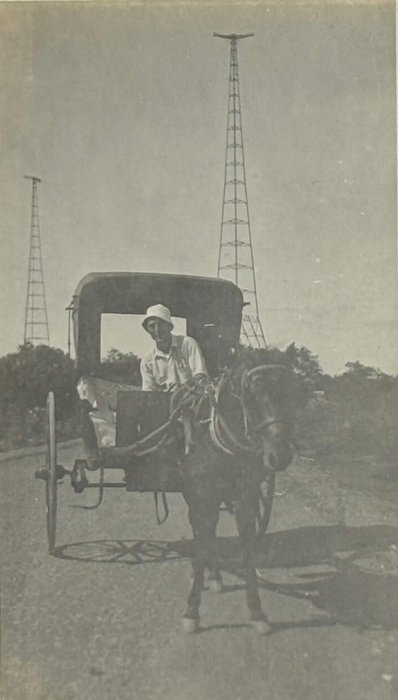


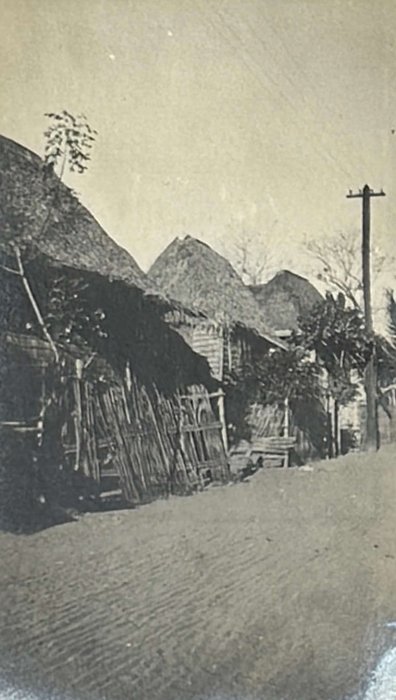
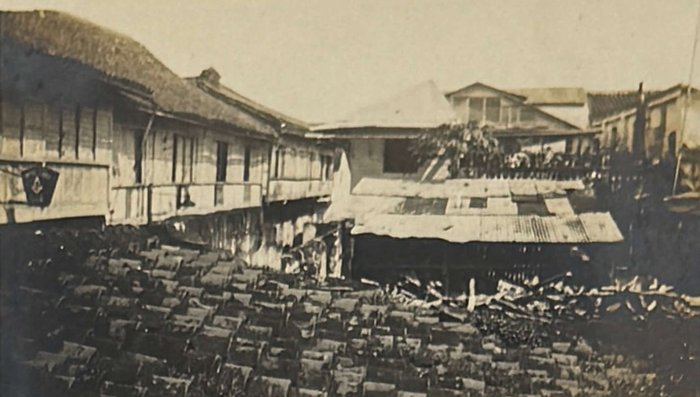
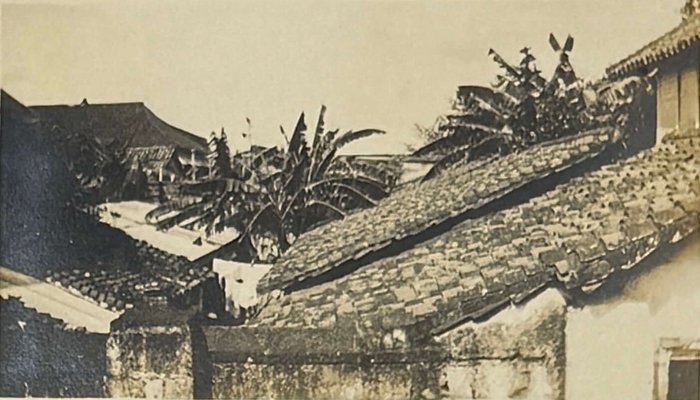
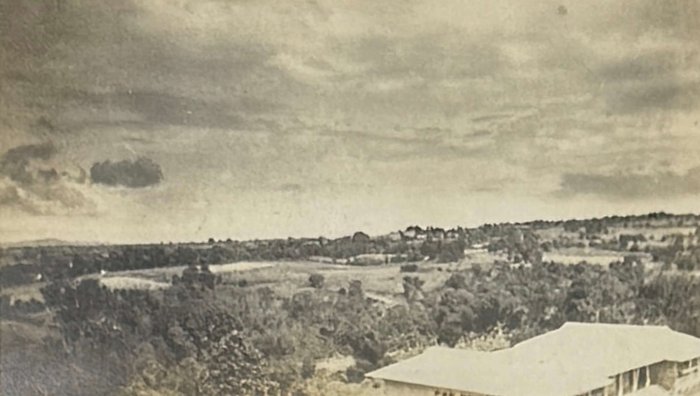

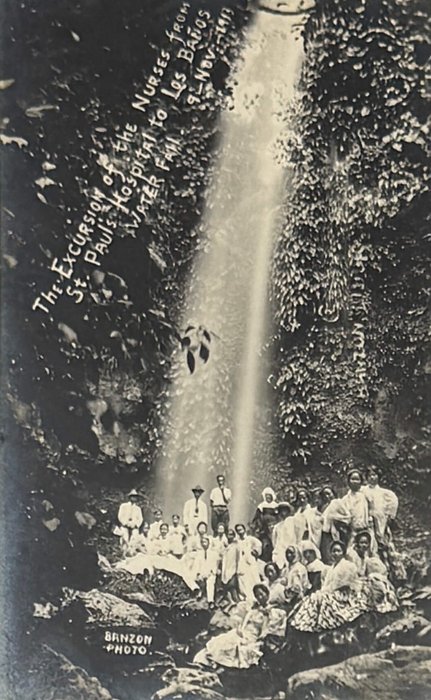
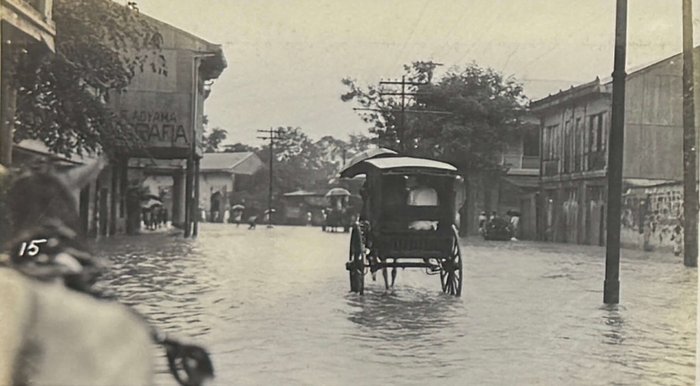
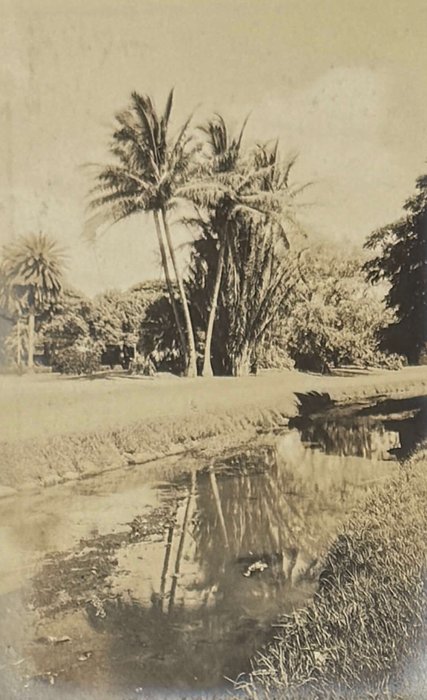
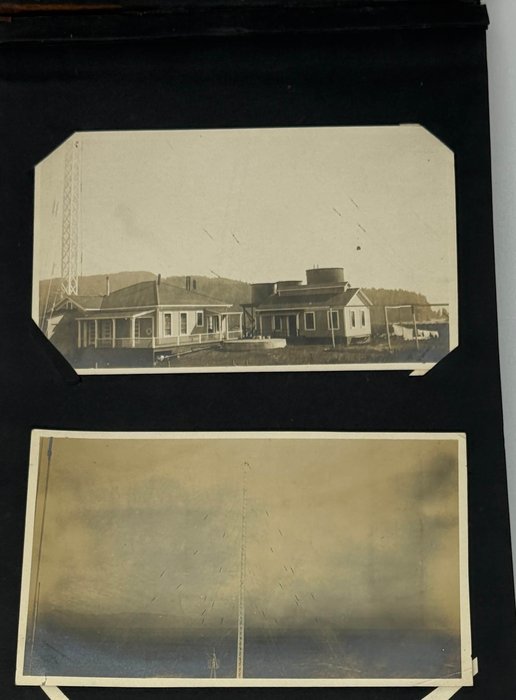
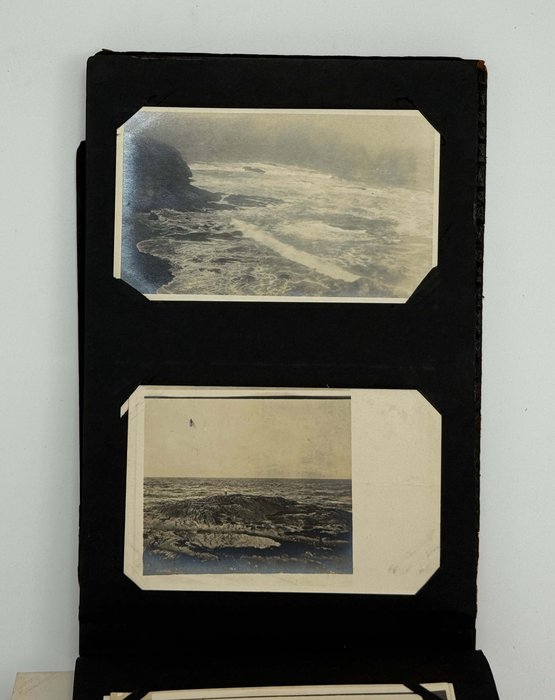
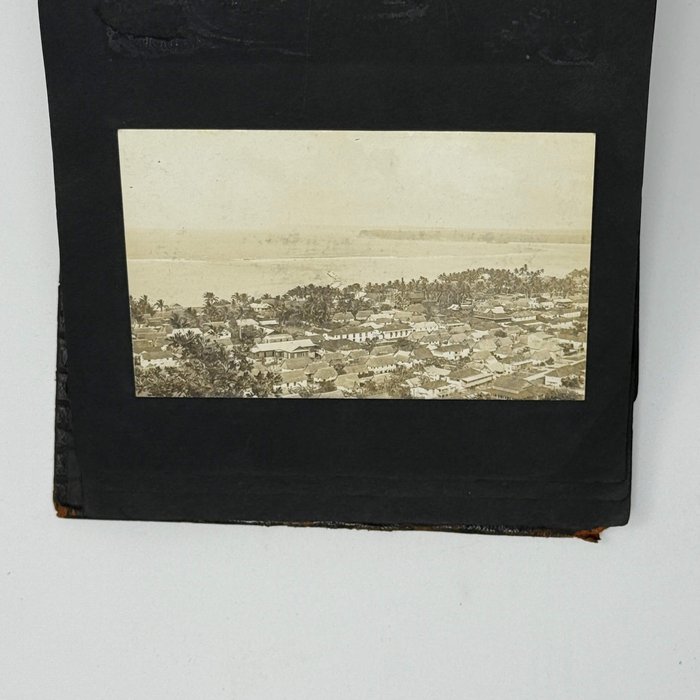
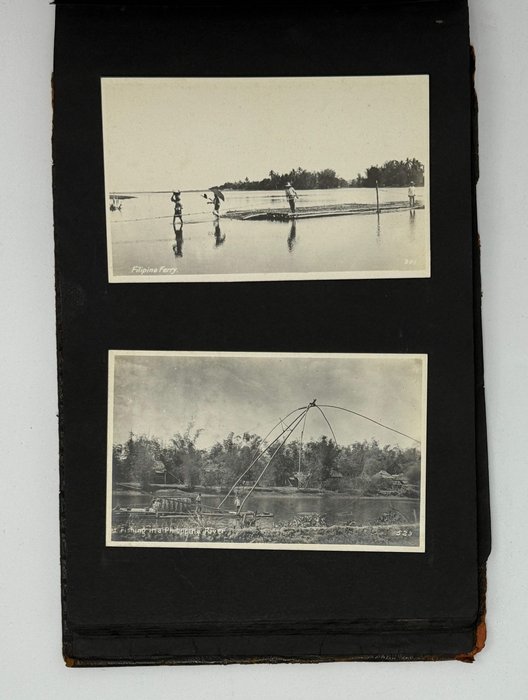
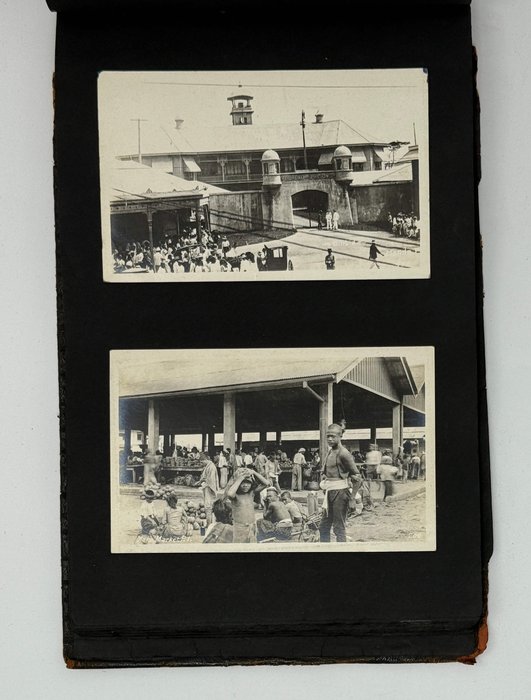
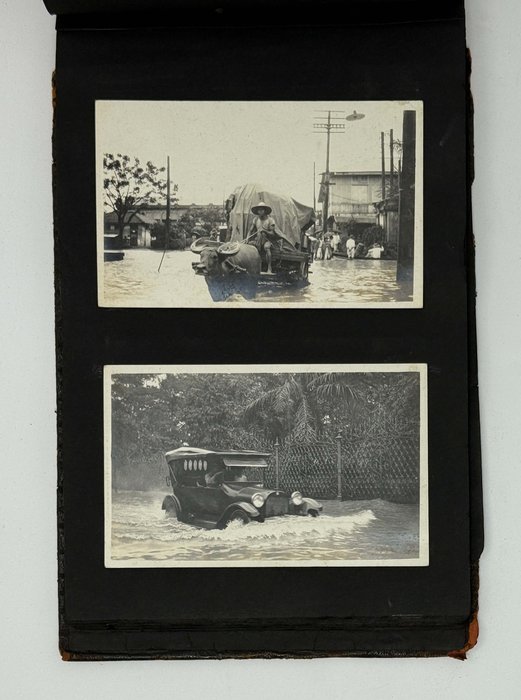
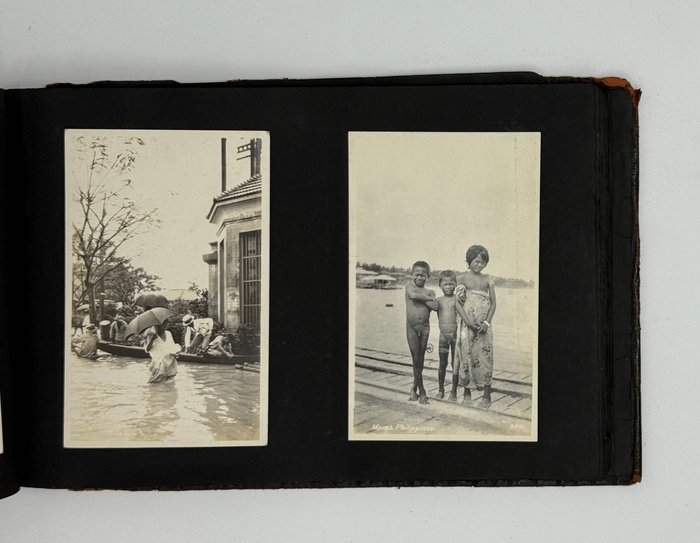
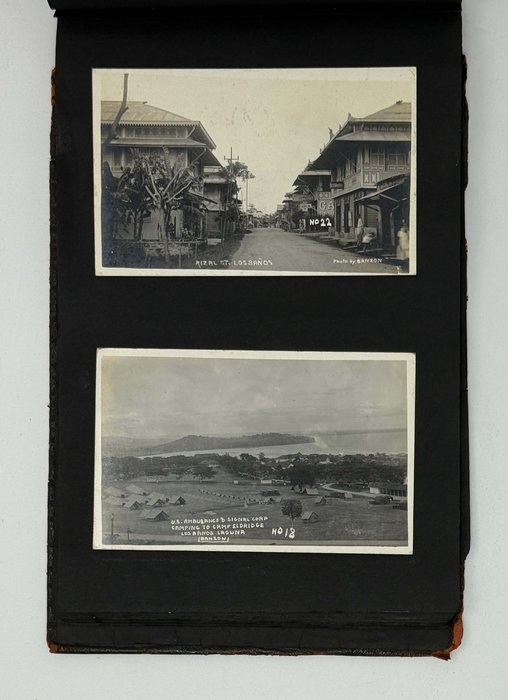
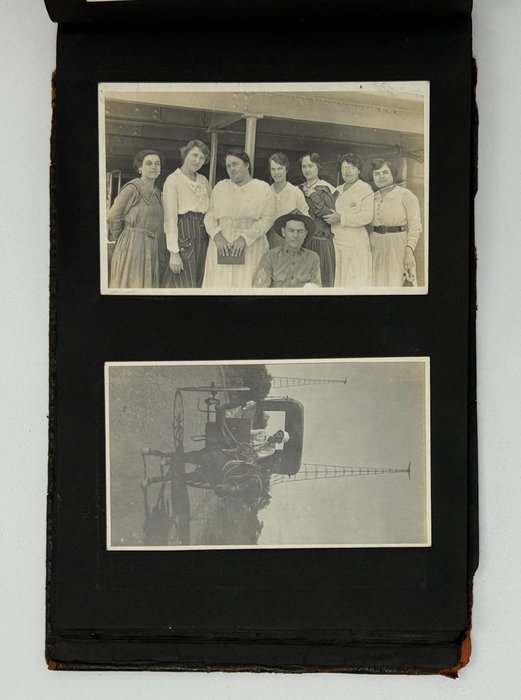
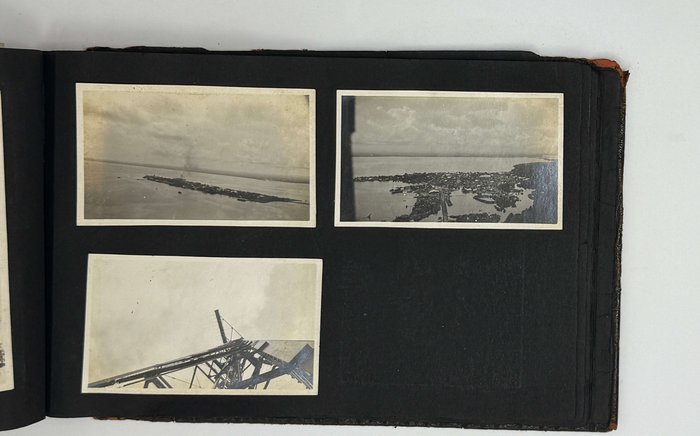
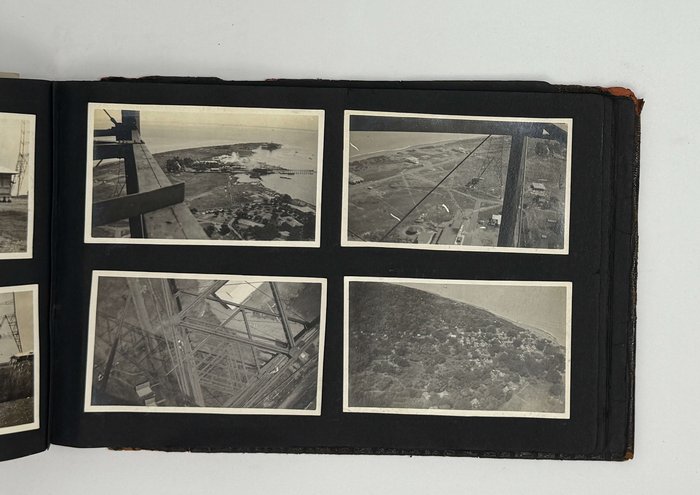
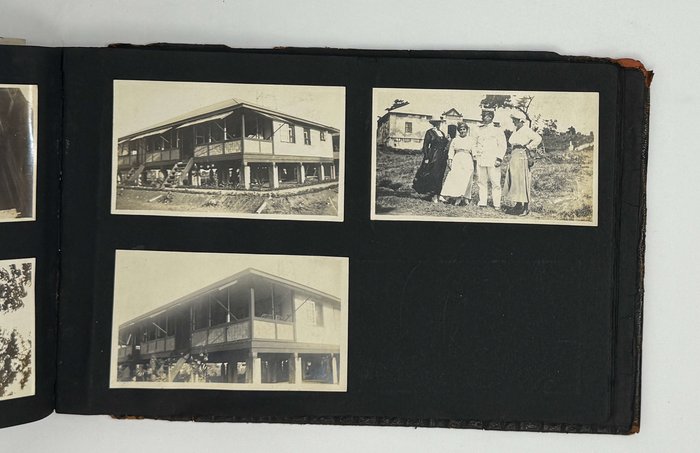
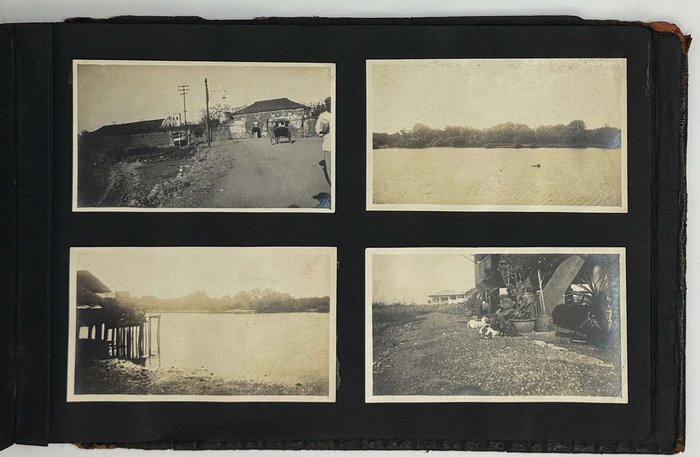
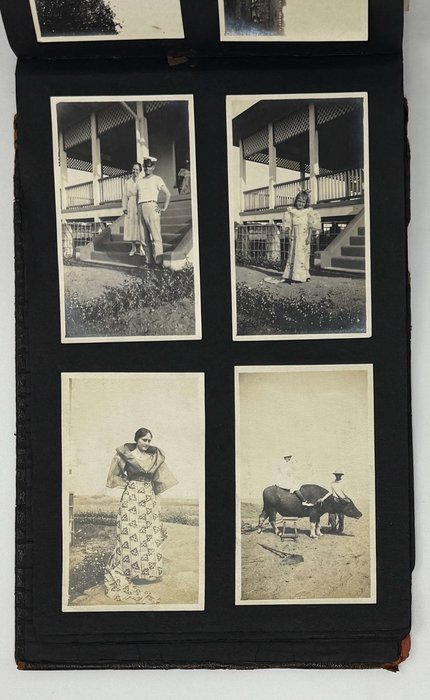
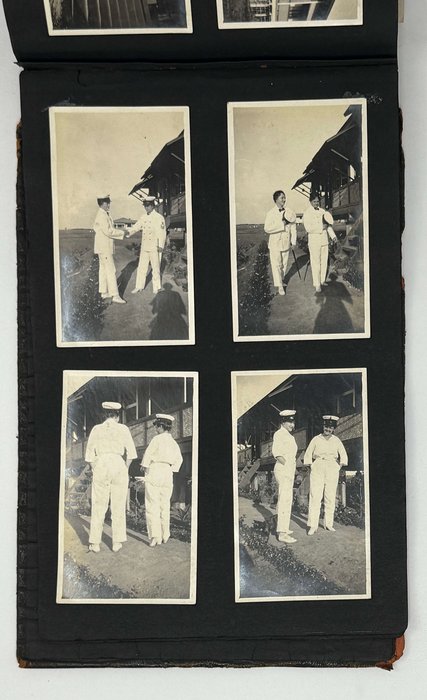
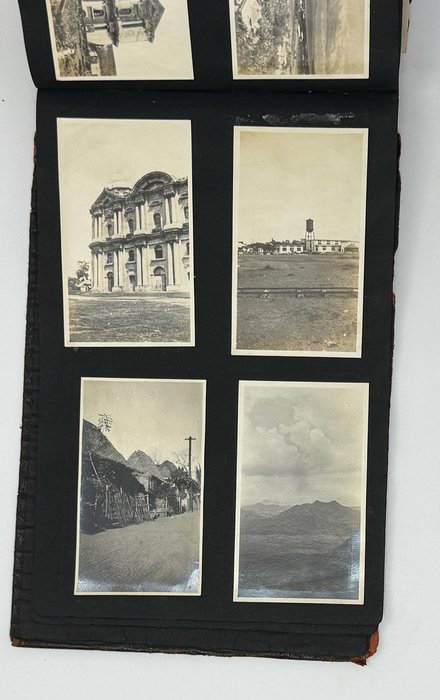
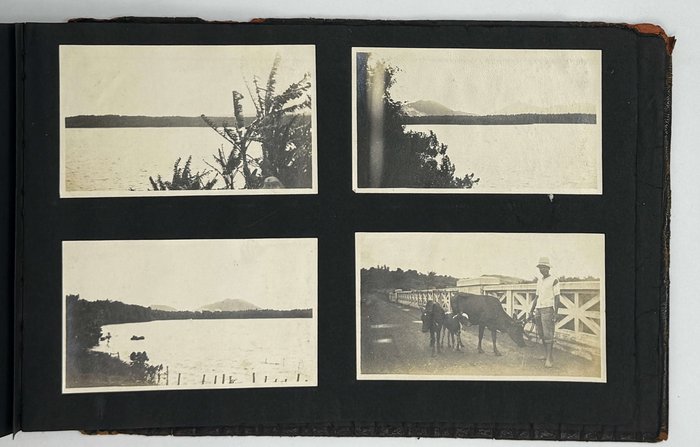
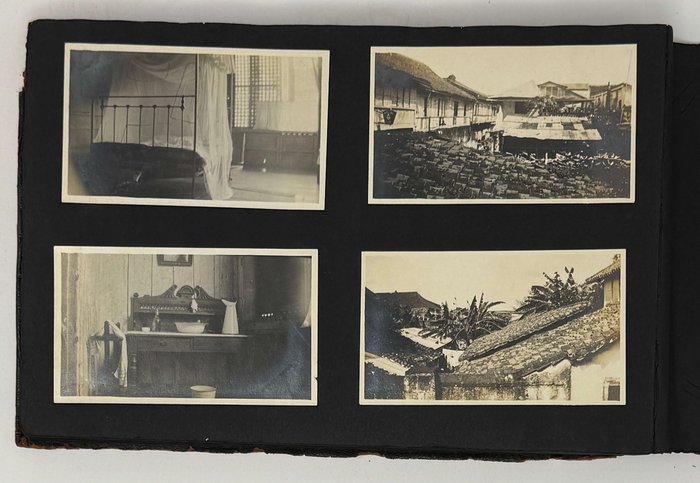
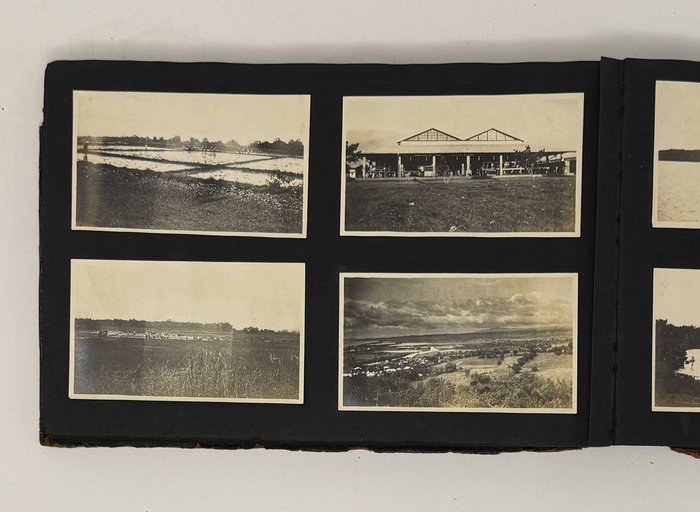
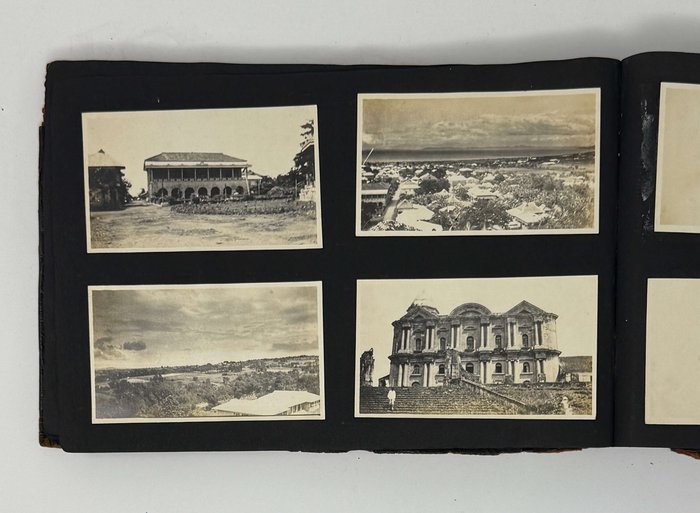
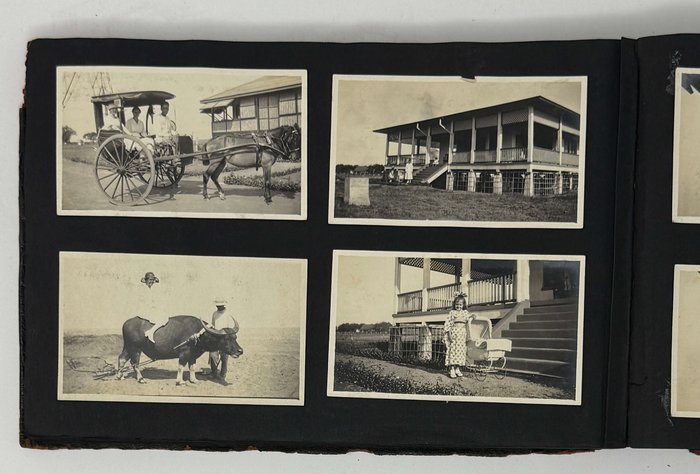
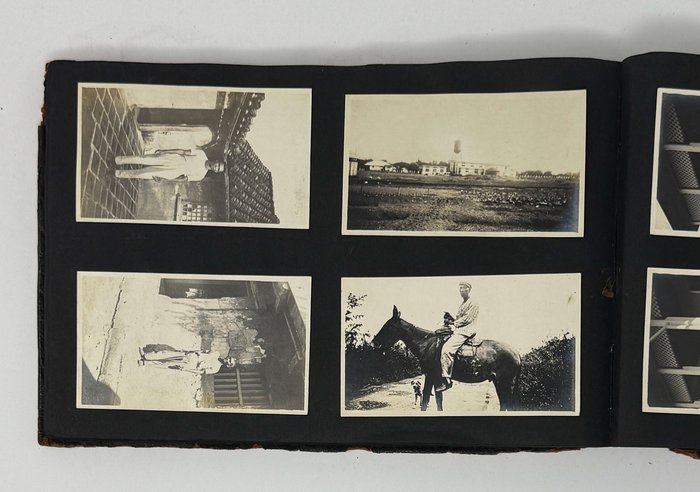
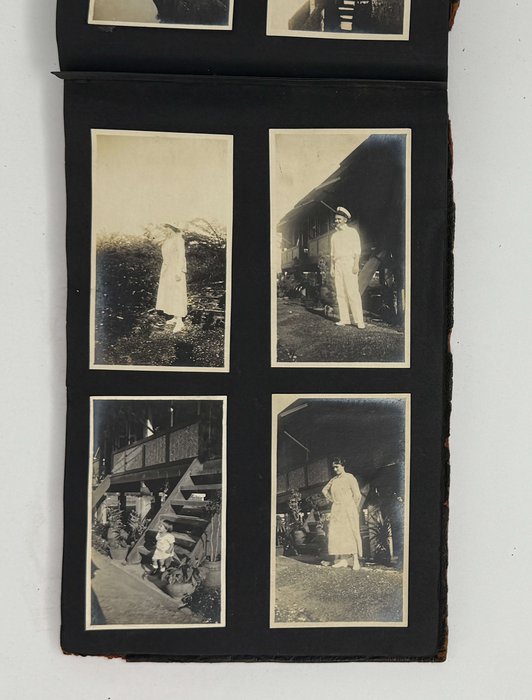
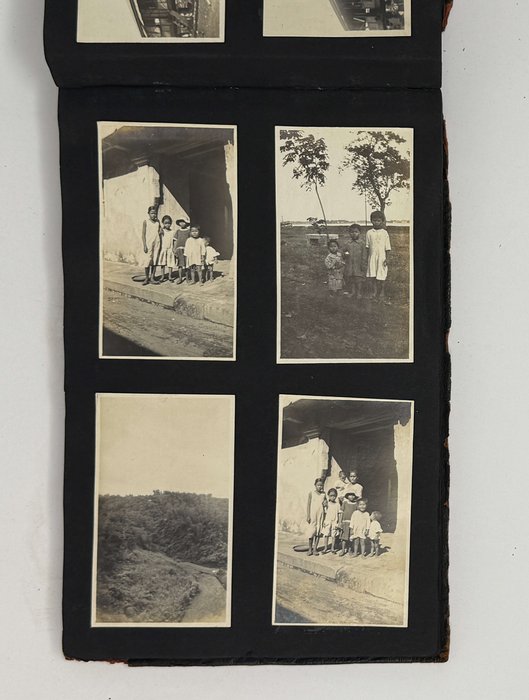
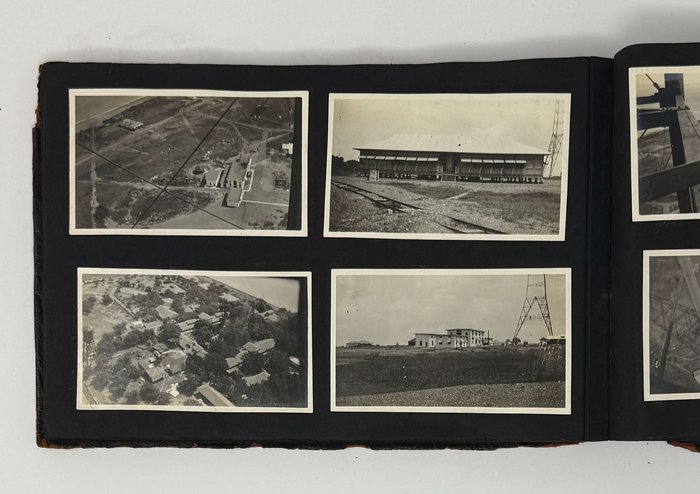

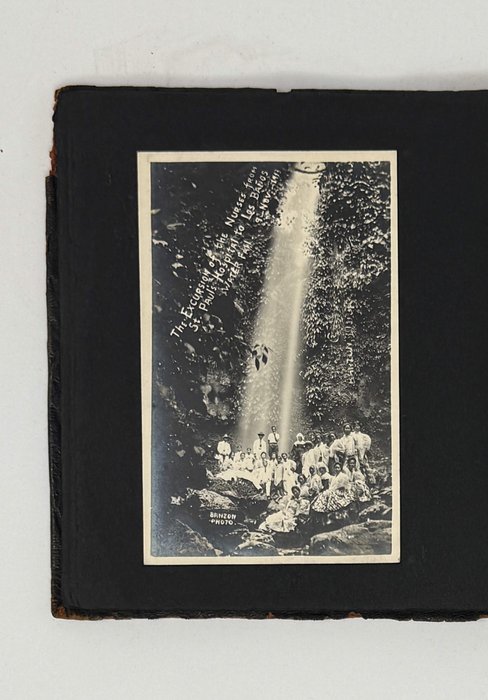
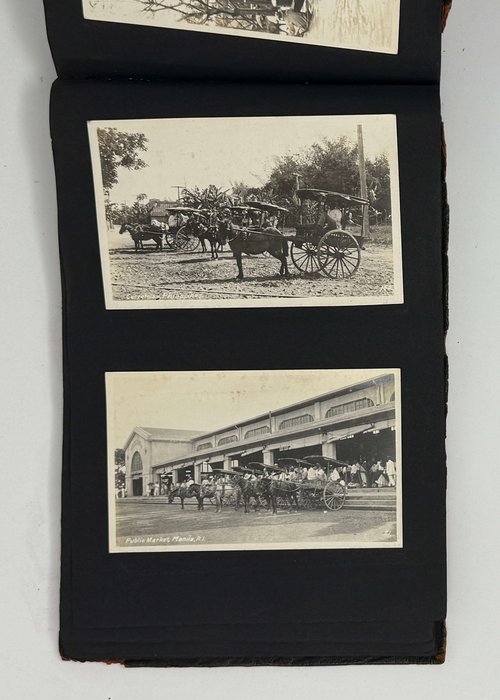
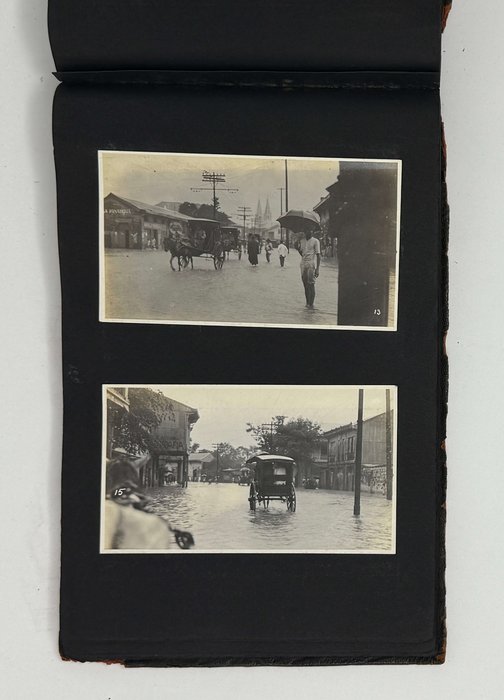
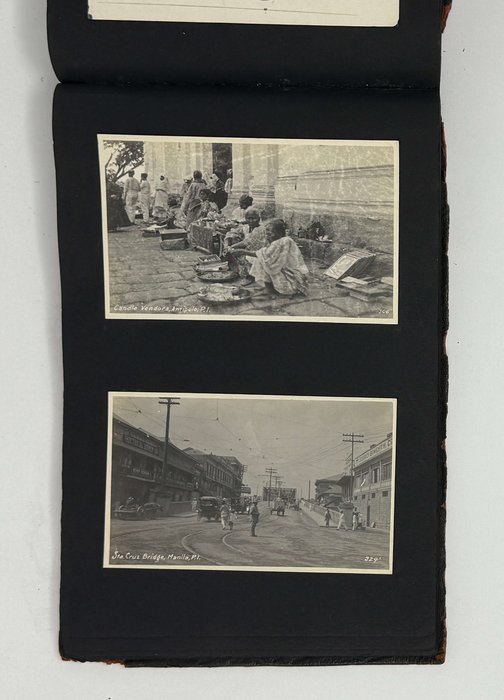
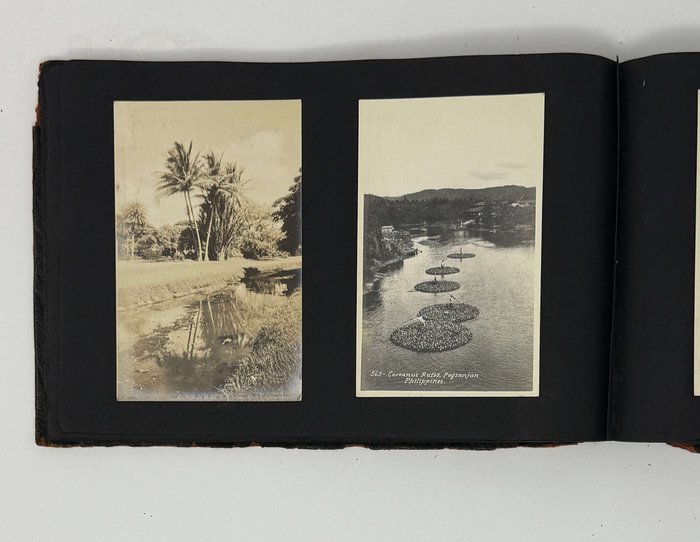
#PF35
Сa. 1913-1920s
Oblong Quarto album (ca.18x29 cm). 38 paper album leaves (19 blank) . With ca. 90 mounted original gelatin silver photographs and 2 postcards from ca. 14x8,5 cm (5 ½x3¼ in) to ca. 10,9x6,5 cm (4 ¼ x 2½ in). Some photos with period caption in negative, citing ‘Banzon photos’, likely a local studio, the others without captions.
Two Real Photo Color Postcards in The Collection Show the Subano Women and Nagasaki View. Both are mounted with a strong glue, the previous owner tried to un-glue one to reveal the signature ‘P.J.’, possible date ‘1919(?)’ and readdress ‘To U.S.N.Radio Station’. Other images might be captioned at the back, this is subject to further research. The Tatoosh group of photos are loose, one of them captioned ‘This is the most lonesome place in the world’. Binding worn, several photos missing, few images loose, one of the postcards with tears, but otherwise a very good album of strong, interesting photos.
Historically important collection of original photographs illustrating the life of American Navy Officer Serving at Navy Radio Station in Washington and Philippines. He likely received his training at Tatoosh, before being sent to Philippines. Tatoosh station existed since late 1900s, being one of the first Island Naval Radio Stations on West Coast, following the first station on Mare Island, that has been established in 1904. The album is divided into three group of photos, the first one being from WA, the second - from Philippines, one of them dated in negative as of 1913, which suggests the arrival of the officer to Philippines around that time or in late 1910s. The same group of photos are taken in variety of places in the Philippines, but already include a number of photos of Las Baños, including the panorama of Los Baños Laguna with U.S. Ambulance & Signal Corp Camp Eldridge on it. The image of thecamp is a good verification for the dating of the photos of the first group: it has been photographed in a very early stage of its establishment, while later photos from before Japanese invasion show more buildings and more developed territory. This group of photos, which are larger include 17 images.
The third group of photos is dedicated entirely to Las Baños, its radio facilities and the life of the officer: his home, his wife, his friends, the locals he has photographed. In this series the photographer is likely climbed one of the radio towers and took aerial shots in the process of his climb, as well as from the top. As a result, a series of photographed has survived, showing the laguna and the operation in Los Baños in the early stage.
US Naval Radio Control Station was built in 1917, including three 600' towers, by 1930 it was operating at a significant capacity, as the photos, published by navy-radio website demonstrate.
It is likely our group of photos is taken earlier, as the territory shown on the photos from 1930 is developed more significantly and the pathway to operation building and the gate is not constructed yet. were built in 1917 - one destroyed in 1941 attack, two demolished in 1945.
1920s was the early days for US Navy Communication Stations abroad the US: in 1924 there was a shore-based site at Shanghai as early as 1924, but its operations had been shifted to the USS General Alva in 1927; Guam in 1929 had one-person intercept site. Oahu had two stations established in 1924 and 1925.
The precent station in Los Baños probably was playing a significant role in the region. Civilian radio in the Philippines started in June 1922 with the establishment of KZKZ (AM) in Manila, Philippines by Henry Herman Sr., owner of the Electrical Supply Company in Manila.
One radio tower destroyed in 1941 attack, two demolished in 1945. During Japanese occupation, Los Baños became known for an agricultural school campus turned Japanese internment camp. In famous ‘Raid on Los Baños’, United States Army Airborne and Filipino guerrilla task force have liberated 2,147 Allied civilian and military internees from the camp. Likely the operation affected the Radio Control Station, that was not re-started after 1945.
Overall, an important photographic evidence of the US Navy Radio operations in the Pacific.


